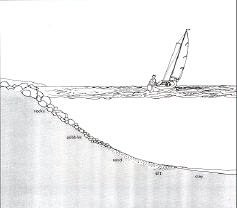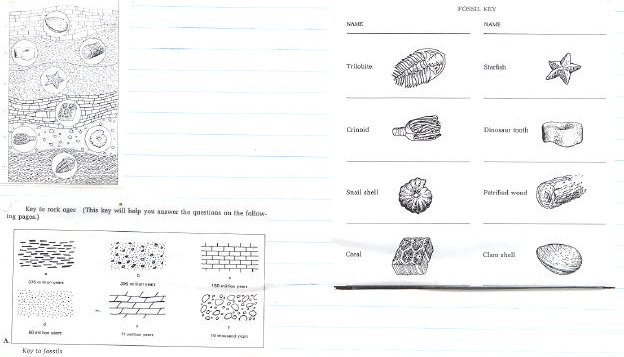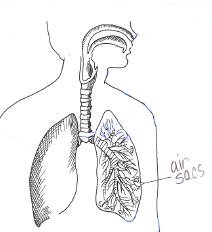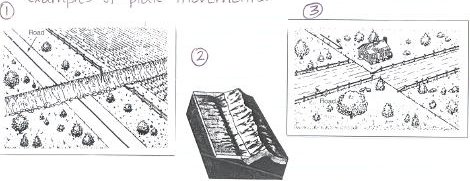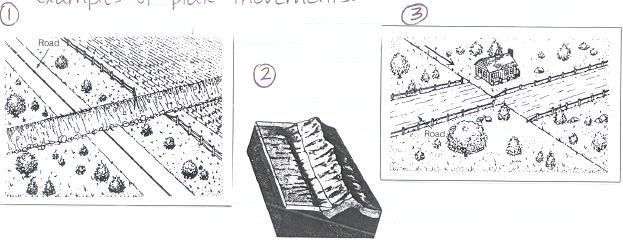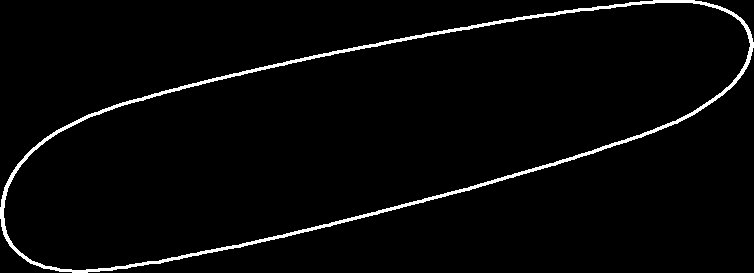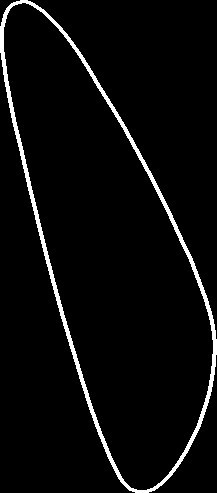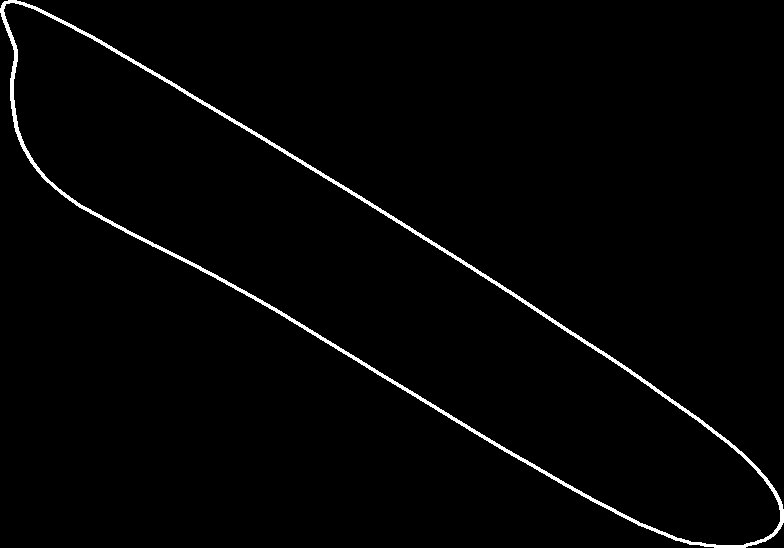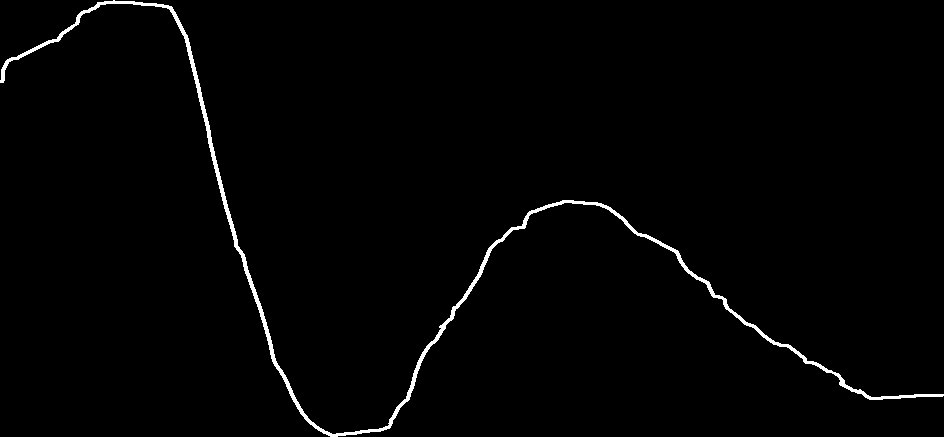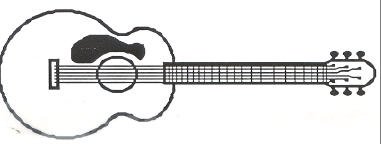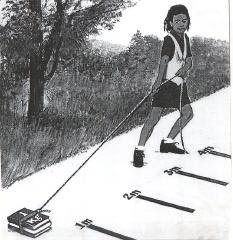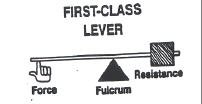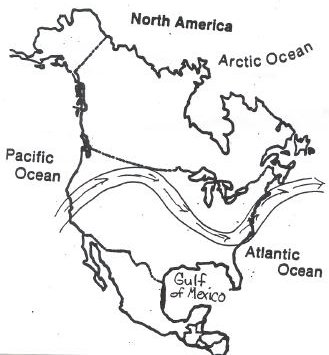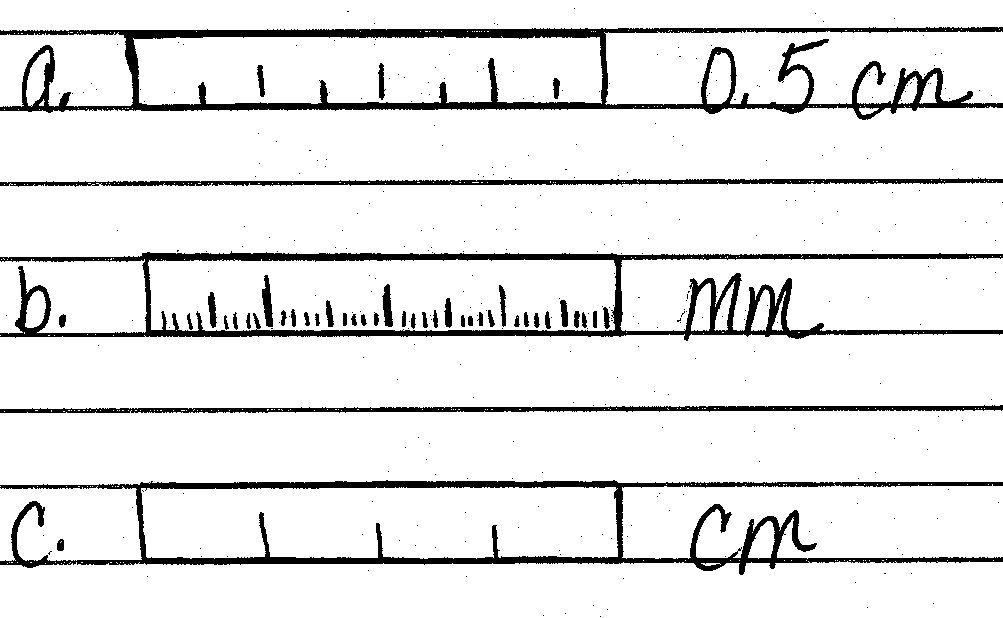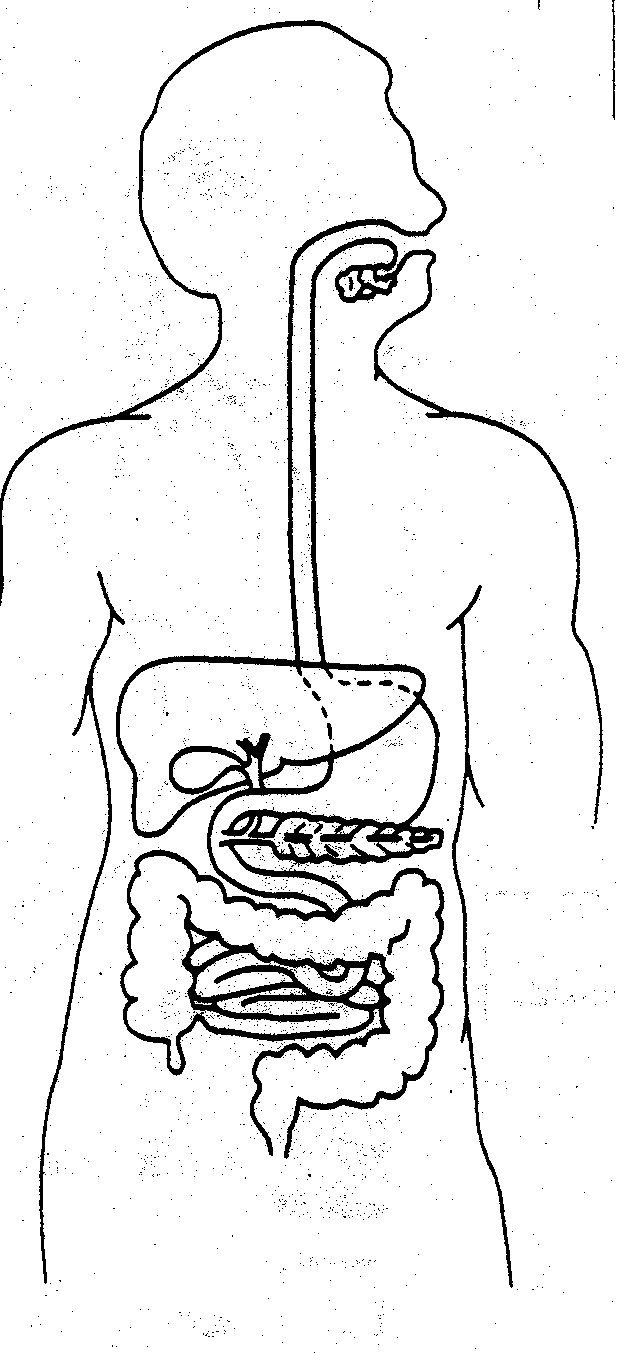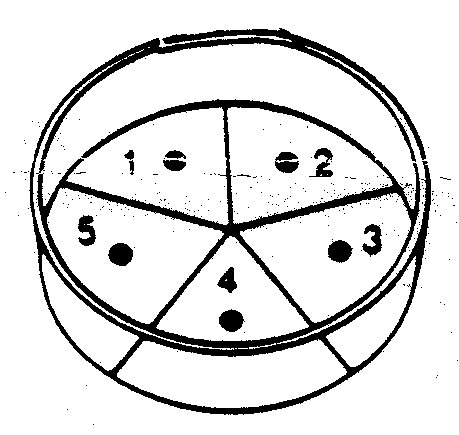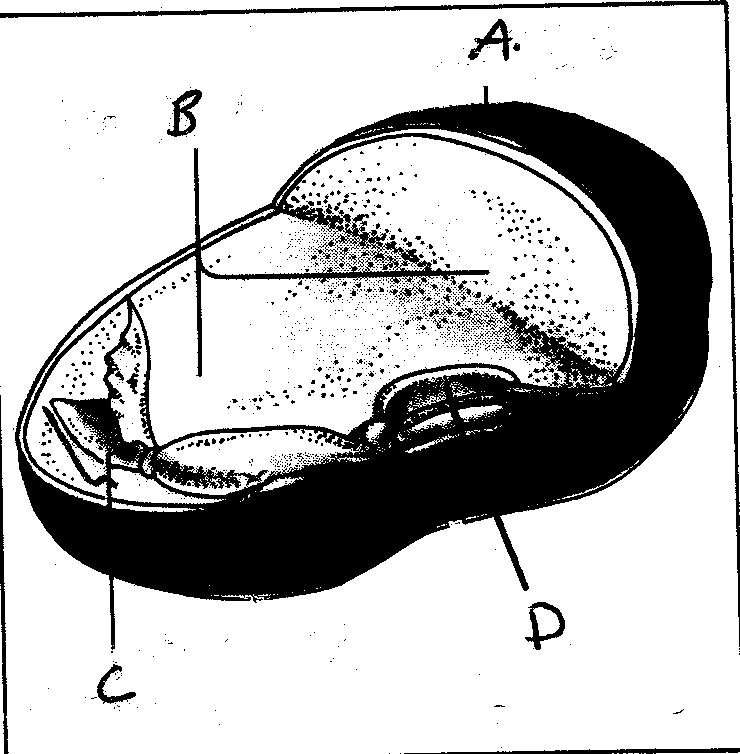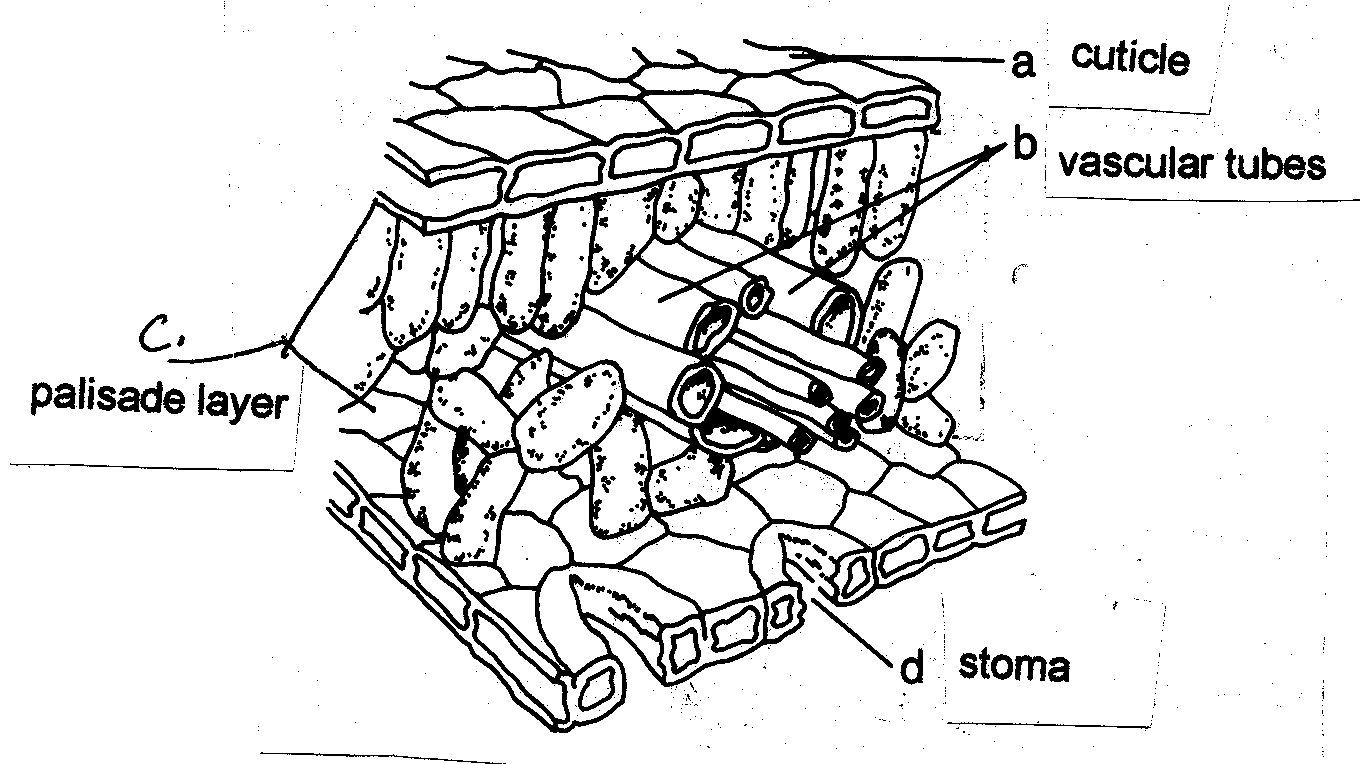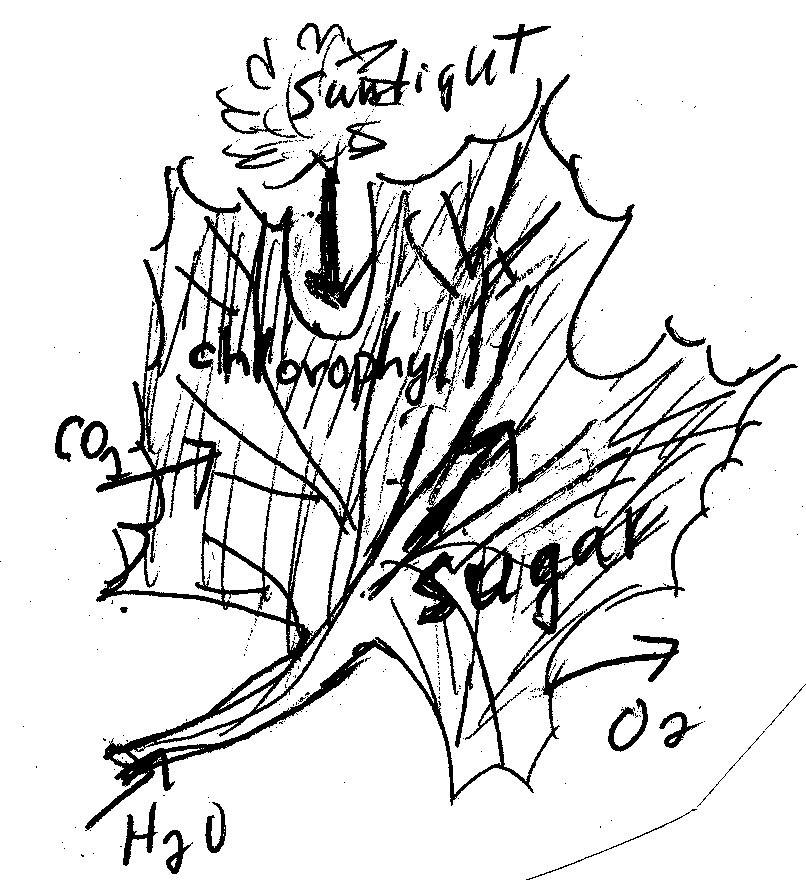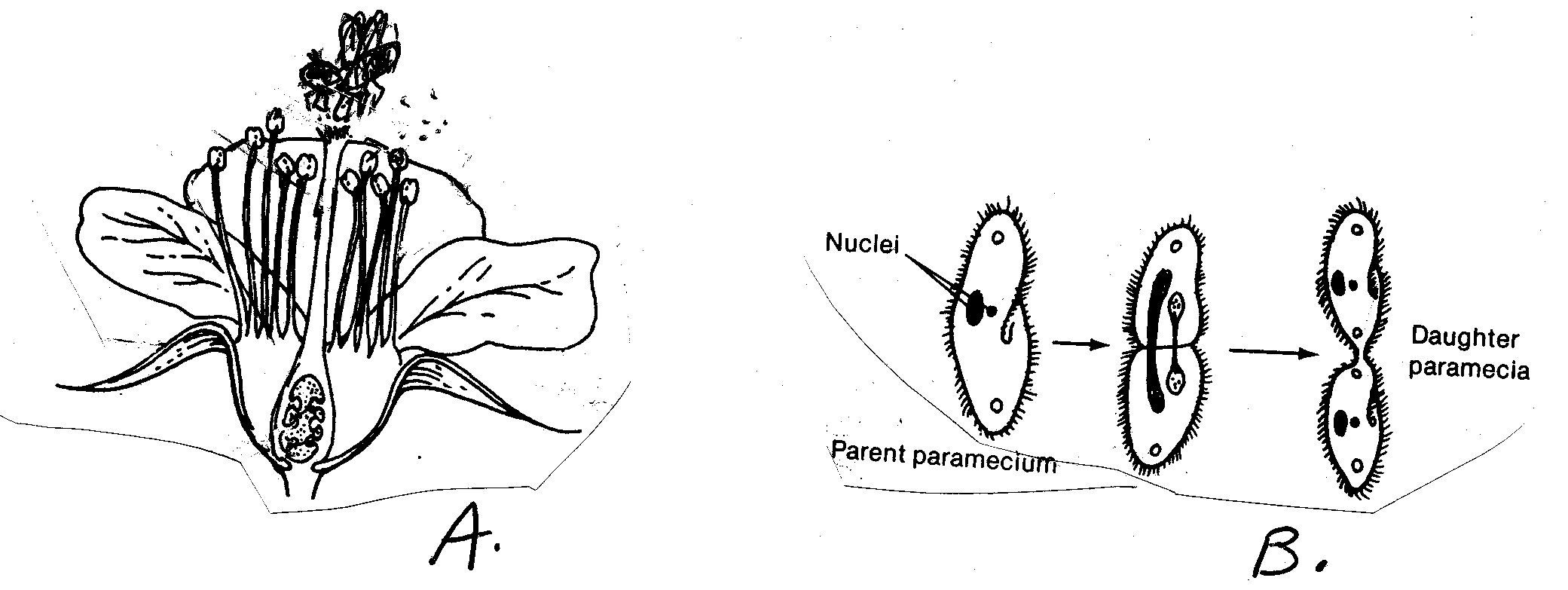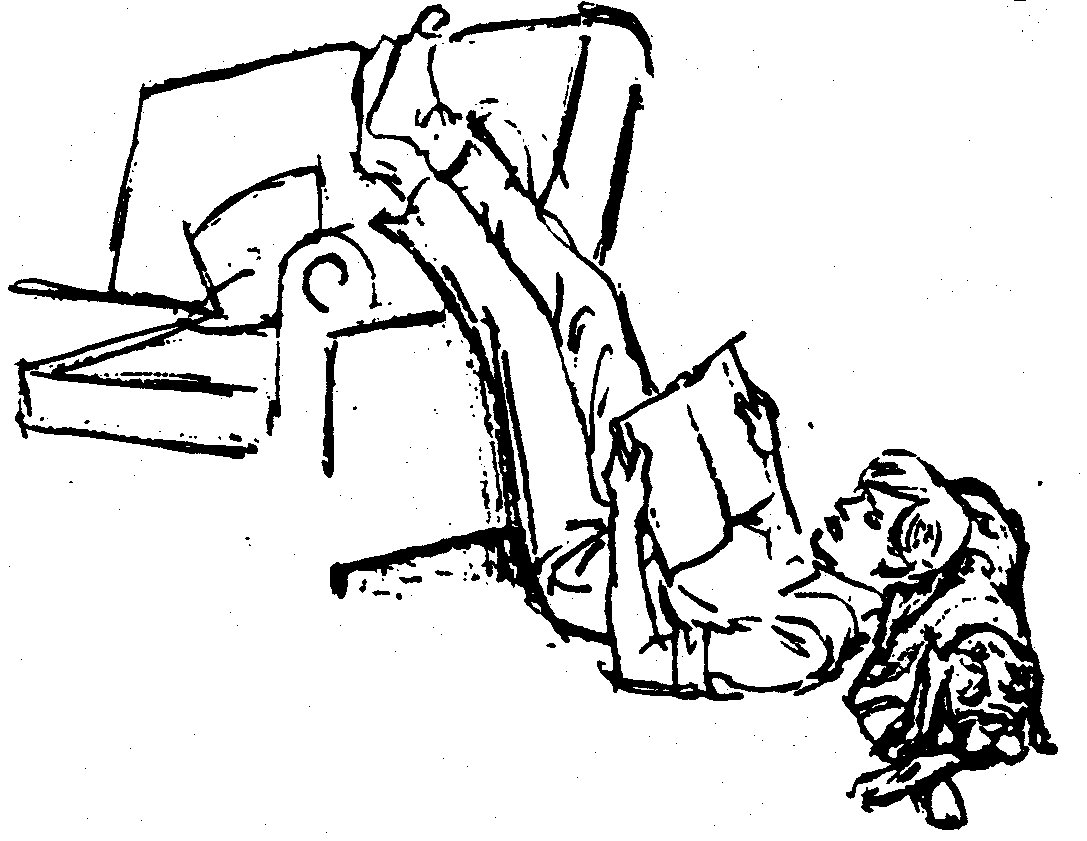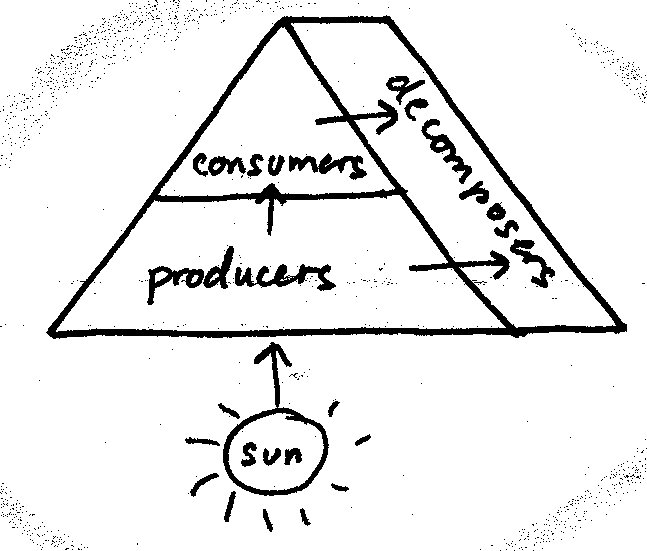100. The length of daylight at a given location on the surface of the Earth depends on:
1)
the latitude and the season
2)
the latitude and the longitude
3)
the longitude and the season
4)
the season and the phase of the moon
101.The force that keeps the planets in
orbit around the sun is:
1)
magnetism
2)
electricity
3)
gravity
4)
friction
102.The rock at the Earth’s surface that forms a nearly continuous shell around the Earth is called the:
1)
hydrosphere
2)
atmosphere
3)
thermosphere
4)
lithosphere
103.Fossils are usually found in:
1)
igneous rock
2)
metamorphic rock
3)
crystalline rock
4)
sedimentary rock
104.The driving force behind erosion is:
1)
magnetism
2)
radioactivity
3)
convection
4)
gravity
105.The driving force causing the movement of tectonic plates is:
1)
conduction cells
2)
convection cells
3)
frontal boundaries
4)
chemical weathering
106.The general movement of high and low pressure systems across the United States id from:
1)
North to South
2)
East to West
3)
West to East
4)
South to North
107.The seasons on Earth are caused by:
1)
the rotation of the Earth on it’s axis and the title of it’s axis
2)
the rotation of the Earth on it’s axis and it’s revolution around the sun
3)
the resolution of the Earth around the sun and the tilt of it’s axis
4)
the revolution of the Earth around the sun and the revolution of the moon
108.An example of a mixture is:
1)
water
2)
oxygen
3)
air
4)
heat
109.Solids can be described as having:
1)
a definite shape but no definite volume
2)
a definite volume but no definite shape
3)
a definite shape and a definite volume
4)
neither a definite shape nor a definite volume
*Note: This can be changed by substituting liquid or gas for the word solid
The formula for kinetic energy is: KE = ½ (mass) (velocity)
2
110. Calculate the kinetic energy of a 1500kg automobile traveling 10 meters per second. Show the
substitution into the formula and express your answer with the correct scientific units.
Rubric:
One point for KE = ½ (1500 kg) (10 m/sec)
2
Two points for 75,000 Joules
75,000 J
75,000 NOM
75,000 K
g m
2
/sec
2
One point for 75,000 with no units or incorrect units
One point for incorrect numerical answer but correct units
The formula for acceleration is:
a (acceleration) =
Γ
Γ
V (change in velocity)
t (the time over which the change occurred)
Newton’s second law of motion states:
F (force) = M (mass) . a (acceleration)
A racecar has a mass of 1000 kg. It accelerates from zero to 80 meters per second in 5 seconds.
111.Calculate the acceleration of the racecar. Show the substitut
ion into the proper formula. Express
your answer with the correct scientific units.
112.Calculate the force required to cause this acceleration. Show the substitution into the proper
formula. Express your answer with the correct scientific units.
Rubric:
1)
One point for a =
80 m/sec
5 sec
2)
Two points for 16 m/sec
2
or 16 m/sec/sec
One point for 16 with no units or incorrect units
One point for m/sec
2
or m/sec/sec with incorrect numerical answer
3)
One point for F = 1000 kg . 16 m/sec
2
or 100 kg 16 m/sec/sec or for substitution of incorrect
numerical answer from 2
4)
Two points for 16,0000 N, 16,000 Kg M/sec
2
One point for incorrect numerical answer with correct units or incorrect units with correct
numerical answer
Location A represents the midAtlantic Ridge where the ocean floor is spreading.
A
113.What is the name of the heat transfer process causing the ocean floor spreading.
Rubric:
One point for convection or convection cell
114.This method of heat transfer is caused by differences in ________________.
Rubric:
One point for density, heat or temperature
115.Write a short paragraph containing at least three good English sentences.
Explain the difference between temperatu
re and heat. Give an example which helps to explain the
difference. Give the scientific units for each. [3]
Sample response: Temperature is the measure of the average kinetic energy of the molecules of a
substance and heat is the total of all the energy contained in all the molecules of a substance. A
milliliter of boiling water and a liter of boiling water are at the same temperature but if you spill
each on yourself the liter will cause much more distress. Temperature is measured in
Celsius
degrees
and heat is measured in calories.
Rubric:
Give one point for explanation of difference
Give one point for a valid example
Give one point for both correct units including
Celsius
116.Write a short paragraph containing at least three good Engli
sh sentences.
Explain the difference between mass and volume. What are the laboratory instruments used to
measure each? What are the units in which each is measured? [3]
Sample response: Mars is the measure of the amount of matter in an object and v
olume is the space
it occupies. Mass is measured on a triple beam balance. Volume is measured with a graduated
cylinder. Mass is measured in grams and kilograms. Volume is measured in cubic centimeters,
milliliters or liters.
Rubric:
Give one point for correct explanation
Give one point for both correct instruments
Give one point for both correct units with no incorrect units included
Allow use of meter stick and calculation for volume of regular solids
The formula for speed is S (speed) =
d (distance)
t (time)
117.Algebraically rewrite the formula for speed so that it becomes a formula for distance in terms of
speed and time. [1]
A car is traveling at a constant speed of 20 meters per second when it crosses a crosswalk.
118.Use the formula you wrote to complete the table showing the distance traveled from the crosswalk
over a 10second interval. You may use this table for practice but be sure to complete the table on
the separate answer sheet.
TIME IN SECONDS
DISTANCE IN MOTION
0
0
(One point)
1
2
3
4
5
6
7
8
9
10
119.On the grid provided on your separate answer sheet, make a line graph showing the motion of the
car. Plot the time on the horizontal axis and the distance traveled on the vertical axis. Put the
appropriate number scale, including units, on each axis and label each axis. Plot each point from
the table with an “X” and connect the points with a line. You may use this grid for practice but be
sure to complete your actual graph on the separate answer sheet.
(2 points)
120.Explain
in a complete sentence how this graph would change if the car were to accelerate instead of
traveling at constant speed. [1]
Rubric:
117.d (distance) = s (speed) . t (time)
d = s . t
s . t = d
d = t . s
etc
Allow one point for any algebraically
correct variation. The words need not be
included.
118.Allow one point for correctly completing the data table.
TIME IN SECONDS
DISTANCE IN MOTION
0
0
1
20
2
40
3
60
4
80
5
100
6
120
7
140
8
160
9
180
10
200
119.Allow one point for corr
ectly numbered and labeled axis. The origin must have at least one zero.
Allow no credit if numbers are not proportional, or if labels or units are missing.
Allow one point for correctly located points with “X’s” and the connecting line.
Allow tw
o points for both correct axis and correct points and line.
120.Allow one point for any complete
sentence which has the concept of a curved line in it. (If the car
were accelerating, the line would be a curve upwards.)
121.Matter that has no definite
shape but has a definite volume is said to be a:
1)
solid
2)
liquid
3)
gas
4)
plasma
122.Energy of motion is known as:
1)
kinetic
2)
potential
3)
electrical
4)
mechanical
123.Object A floats in water but sinks in liquid B. Which of the following is correct?
1)
liquid B is less dense than water
2)
object A is more dense than water
3)
object A is less dense than water
4)
liquid B has the same density as water
124.Rotation causes:
1)
day and night
2)
seasons and years
3)
solar flares
4)
tides
125.A low potential energy situation is:
1)
a stretched rubber band
2)
a roller coaster at the bottom of the first hill
3)
a pole vaulter just clearing the bar
4)
a parachutist when he first exits the plane
126.Energy that is transferred from an object with a higher temperature to one with a lower temperature
is called:
1)
heat
2)
potential
3)
kinetic
4)
mechanical
127.The color of ink is a:
1)
chemical property
2)
chemical change
3)
physical property
4)
physical change
128.A force that opposes motion between two surfaces that are touching each other is:
1)
gravity
2)
weight
3)
centripetal
4)
friction
129.In which situation is a chemical change occurring:
1)
salt dissolving in water
2)
a nail rusting
3)
ice melting
4)
a glass breaking
130.If a balloon filled with air were heated, its volume would probably:
1)
increase
2)
decrease
3)
remain the same
A photographer set up his camera to take a picture of the sky all night long. Using the process of
leaving the shutter of the camera open for a long period of time, the photographer got a picture
similar to the one shown here.
131.Name t
he object that is most likely in the center of this picture.
Rubric:
Allow one point for the answer Polaris.
Allow one point for the answer North Star
132.This object appears to be almost motionless because it is directly above which part
of the Earth?
Rubric:
Allow one point for the answer North Pole
Use the graphs below to answer Questions 133 and 134.
1.
Speed
2.
Distance
3.
Speed
4.
Distance
Time
Time
Time
Time
133.Which graph represents a car wi
th positive acceleration?
Rubric:
Allow one point for correct answer (3).
134.Which graph represents a car moving at constant speed?
Rubric:
Allow one point for correct answer (4).
135.Draw a picture of an actionreaction example. Label the acti
on arrow “a” and the reaction arrow
“r”. Include a brief description of your picture.
Rubric:
Allow one point for drawing a picture of any acceptable actionreaction example.
Allow one point for labeling the action arrow “a” and the reacti
on arrow “r”.
Allow two points for including a brief description of the picture using the terms action
reaction.
Allow one point for including a brief description of the picture.
Exemplar Response:
Λ
a
r
!
The action of this balloon is the
air leaving the nozzle. The reaction is the balloon moving in the
opposite direction of the nozzle.
136.Below is a picture of a truck traveling down a curved road. A guardrail is located on the outside of
the curve.
Guard Rail
Road
Truck
ã
traveling in this direction
According to Newton’s First Law, an object in this motion stays in motion in a straight line until an
outside force acts upon it.
Use Newton’s First Law of Motion to offer one explanation for the exact loc
ation of the guardrail.
Rubric:
Allow one point for restating or using part of Newton’s First Law in response.
Allow one point for explaining that an outside force (such as friction) is necessary for the
truck to follow the curve in the road.
Allow
one point for explaining that the guardrail prevents the truck from going off the
road if it were to continue in a straight line.
Exemplar Response:
According to Newton’s First Law, an object in motion stays in motion in a straight line
until an outside force acts upon it. Therefore, in order for the truck to follow the curve in
the road, an outside force (friction) must be applied. If that force (of friction) was not
strong enough, the truck, would continue in a straight line. The guardrail is located in that
exact position to stop the truck from going off the road if it were to continue in a straight
line.
137.All living things are composed of:
1)
cells
2)
tissues
3)
organs
4)
systems
138.Substances are moved to and from cells, where they are needed or p
roduced, responding to
changing demands by the:
1)
circulatory system
2)
excretory system
3)
digestive system
4)
respiratory system
139.Herbivores obtain energy from:
1)
animals
2)
plants
3)
plants and animals
4)
dead organisms
140.Evidence that a great variety of species e
xisted in the past is shown by:
1)
sedimentary rock
2)
extinction
3)
fossils
4)
changing life forms
141.The major source of atmospheric oxygen is:
1)
respiration
2)
transpiration
3)
photosynthesis
4)
excretion
142.All the individuals of a species that are found together at
a given place and time are called a:
1)
community
2)
environment
3)
population
4)
ecosystem
143.Hereditary information is contained in:
1)
Golgi bodies
2)
mitochrondia
3)
ribosomes
4)
chromosomes
144.The rock at the Earth’s surface forms a nearly continuous shell called the
:
1)
hydrosphere
2)
lithosphere
3)
atmosphere
4)
troposphere
145.The transport of sediment is:
1)
erosion
2)
weathering
3)
the water cycle
4)
circulation
146.The amount of matter that is in a given amount of space is known as:
1)
density
2)
buoyancy
3)
weight
4)
mass
Base your answers to Questions 147 and 148 on the picture below:
When a river empties into a body of water, it deposits sediment.
147.Which sediment is deposited first?
Rubric:
Allow one point for the answer
rocks.
148.Explain, in a complete sent
ence, why this earth process happens.
Rubric:
Allow one point for the answer that
heavier objects settle out first.
Base your answers to Questions 149 and 150 on the picture and keys below.
149.Which fossil is found in the oldest rock layer?
Rubric:
Allow one credit for the answer
trilobite.
150.Based on the information about fossils contained in the picture and keys, explain in complete
sentences what the environment was like 60 million years ago.
Rubric:
Allow two points for the answer: It was land (or dry) because fossils found there are
petrified wood and a dinosaur’s tooth. (These organisms lived on land)
Allow one point for
land or dry or dinosaurs and trees lived on the dry earth
.
151.Students read the following data about a hay
infusion when drops are observed under a microscope.
Time
(in weeks)
# of
Bacteria
# of
Algae
# of
Paramecium
# of
Rotifers
1 week
20
5
2
0
2 weeks
44
20
16
1
3 weeks
19
9
8
6
4 weeks
1
2
0
0
Based upon the above information, explain the populat
ions increase and resulting decrease.
Rubric:
Allow 2 points for explanation of both increase and decrease in populations.
Allow 1 point for explanation of increase only or decrease only.
Allow 0 points for no information about population increase o
r decrease.
Possible Reasons:
Reproduction occurs causing rapid increase in population growth.
As predators multiply, their food source declines (producer, consumer, prey, predator).
Near/extinction occurs due to competition for food, oxygen, spa
ce.
152.After a heavy spring rain shower, several students noticed that while walking home from school,
that the sidewalks and roads were covered with mud. The students started talking among
themselves about the reasons why.
They remembered in science
class words like erosion, sediment, and runoff.
One member of the group remembered that soon a science fair project would be due. He/she
thought that this would be a good topic for a project.
If you were that student, how could you develop this proje
ct? Include these elements in your
response:
•
state the hypothesis
•
identify the factor to be varied (variable)
•
identify one constant factor
•
clearly describe the procedure
Rubric:
Hypothesis: Allow 1 point for an acceptable hypothesis. Ex: The mud or runoff was caused
by water erosion.
Allow 0 points if no mention of erosion.
Variable: Allow 1 point for
amount of rainfall mentioned.
Allow 0 points if no amount of rainfall is mentioned.
Constant: Allow 1 point for
tilt of pan
mention.
Allow 0
points if no mention of tilt.
Procedure: Allow 1 point for:
erosion run pile of soil, add water, notice runoff.
Allow 0 points if no procedures listed.
153.At one time all continents were one landmass. This landmass was called:
1)
Earth
2)
Pangea
3)
North America
4)
Antarctica
154.The force that keeps the Earth in orbit around the sun is:
1)
friction
2)
centrifugal force
3)
gravity
4)
parabola
155.The phase of matter that takes the shape and volume of the container it is in is called:
1)
solid
2)
liquid
3)
evaporation
4)
gas
156.When energy changes form, some of this energy is always converted to:
1)
speed
2)
molecules
3)
heat
4)
chemicals
157.Energy cannot be created or destroyed, but only changed from one form to another. This describes:
1)
Bernoulli’s Principle
2)
Law of Conservation of Energy
3)
Newton’s 1
st
Law of Motion
4)
Pascal’s Principle
158.For every action there is an equal and opposite reaction. This describes:
1)
Newton’s 1
st
Law of Motion
2)
Newton’s 2
nd
Law of Motion
3)
Newton’s 3
rd
Law of Motion
4)
Pascal’s Principle
159.A force tha
t opposes motion is:
1)
friction
2)
gravity
3)
centrifugal force
4)
inertia
160.The system that consists of organs responsible for the chemical and mechanical breakdown of food
is:
1)
reproductive
2)
digestive
3)
respiratory
4)
circulatory
161.Abnormal cell division results
in:
1)
mitosis
2)
cancer
3)
chromosomes
4)
benign tumors
162.An example of a chemical change is:
1)
burning a piece of wood
2)
an ice cube melting
3)
crushing an empty can
4)
tearing a piece of paper
A flowered plant is placed in a vase of water.
163.Name the 4 parts o
f the plant the water will go through. [4]
Rubric:
Allow 1 point for each correct answer: roots, stem, leaves, flowers. [4 total]
164.Pick 2 parts of the plant and identify 2 of their functions. [4]
Part ______________________________
Part ______
____________________
Function __________________________ Function ______________________
Function __________________________ Function ______________________
Rubric:
Allow 1 point for each correct function. [4 total]
Roots
Stems
anchor plan
t
support leaves
absorb water
support flowers
store food
transport water
Leaves
Flowers
make foods (photosynthesis)
reproductive part of plant
exchange gasses
pollinated by insects and birds
Use the picture to help you answer Questions 165 and 166.
165.What takes place in the air sacs? [1]
Rubric:
Allow 1 point for either of the following answers:
exchange of gasses
exchange of oxygen and carbon dioxide
Allow 0 points for
exchange of air
166.Name a disease or il
lness that affects the way the lungs function. [1]
Rubric:
Allow 1 point for any of the following answers:
•
pneumonia
•
bronchitis
•
cystic fibrosis
•
whooping cough
•
lung cancer
•
asthma
•
(other reasonable answers)
Plates of the earth may collide, move apart, or slide past one another. Below are examples of plate
movements.
167.
Choose one picture and draw a circle around the area where the fault line is located. [1]
Rubric:
168.Identify one event that can happen on or hear a fault line. [1]
Rubric:
Allow 1 point for acceptable answers as follows:
•
earthquake
•
volcano
•
ocean trench
•
mountain formation
169.Explain two effects this event has on the communities around this area. [2]
Rubric:
Allow 2 points for acceptable answers as follows:
•
landforms may change
•
destruction of homes, property
•
loss of life (humans, animals, plants)
•
injuries
•
loss of electricity, gas
•
other reasonable answers
The figure below shows the organs that make up the excretory system.
170.
Identify the 4 organs shown in
the figure:
a)
____________________ [1]
b)
____________________ [1]
c)
____________________ [1]
d)
____________________ [1]
Rubric:
a)
skin [1]
b)
lungs [1]
c)
kidneys [1]
d)
large intestine [1]
Exemplar Answer:
a)skin
b)lungs
c)kidneys
d)large intestine
171.Sta
te one way these organs help protect the body from disease. [1]
Rubric:
Allow 1 point for acceptable answers:
•
organs remove waste
•
remove toxic substances
•
remove toxins from body
Exemplar Answer:
These organs help remove toxins from the body.
172.Select one organ from the figure above and identify one condition that would make the organ
function less effectively. Use complete sentences. [2]
Rubric:
Allow 1 point for acceptable answers:
Lungs
Skin
cystic fibrosis
blocked sweat gland
s
pneumonia
skin cancer
sunburn
Kidneys
Large Intestine
kidney failure
colon cancer
infections
ulcers
Exemplar Answer:
Lungs cystic fibrosis affects the lungs. The lungs fill with fluid which make it harder for
the person to breathe.
173.Which ball has the greatest potential energy?
•
A
•
C
•
D
•
B
1)
A
2)
B
3)
C
4)
D
174.The flow of energy in a food chain could best be pictured as:
1)
a circle
2)
a rectangle
3)
a pyramid
4)
a diamond
175.Which position of th
e moon is seen as a full moon from Earth?
A
0
sun
B
Earth D
0
0
0
C
1)
A
2)
B
3)
C
4)
D
176.What is the thickest layer of the Earth?
1)
mantle
2)
crust
3)
inner Core
4)
outer Core
177.One way to identify a min
eral is by its:
1)
size
2)
odor
3)
hardness
4)
weight
178.Convection cells within what layer of the Earth may cause the movement of the plates?
1)
crust
2)
inner core
3)
outer core
4)
mantle
179.In the diagram, which is the producer?
1)
grass
2)
grasshopper
3)
frog
4)
snake
180.A population in an ecosystem increases if:
1)
there are no predators
2)
there is a lack of resources
3)
habitats are destroyed
4)
climate changes
181.How do we know about the extinct ancient trilobites?
1)
written records
2)
fossils
3)
pictures
4)
survivors
182.All
firstlevel (primary) consumers on a food chain are:
1)
carnivores
2)
decomposers
3)
producers
4)
herbivores
Use this example of a seismograph reading to explain energy waves produced by an earthquake for
Questions 183 and 184.
Ground
Movement
(mm)
3
2
1
0
1
2
3
Arrival of Surface Waves
PWaves
Arrival of
SWaves
1 2 3 4 5 6 7 8 9 10 11
Minutes
183.What is the difference in arrival times between Pwaves and Swaves?
Rubric:
Allow 1 point for the answer
2 minutes.
184.Which type of wave produces the largest ground movement?
Rubric:
Allow 1 point for the answer
surface waves.
Air pressure changes with a change in altitude (height above sea level). This graph shows only the
bottom 2 layers of atmosphere up to 36 km. (The other 3 top layers are not shown)
1000
pressure 800
(millibars)600
400
200
0
4 8 12 16 20 24 28 32 36
185.What is the relationship between air pressure and
altitude?
Rubric:
Allow 1 point for a negative relationship between the air pressure and altitude.
Examples: air pressure decreases with altitude
as height above sea level increases, air pressure decreases
186.Predict when the air
pressure would drop to zero.
Rubric:
Allow 1 point for an answer that indicates an understanding of altitude or layers of
atmosphere.
Examples: air pressure reaches zero where the exosphere (or outer layer) of the
atmosphere ends
air pressure reaches zero when “space” begins.
Read each scene, then follow the given directions to answer Questions 187 and 188.
Scene #1:
Mike walked across the room. As he touched the doorknob, he felt a shock.
Scene #2:
The dark clouds swirled violently. Suddenly a bolt of lightening lit the sky as it snaked
between the cloud and the tree.
187.Illustrate each scene. Be sure to include the objects involved and the action happening. [2]
Scene #1
Scene #2
Rubric:
Allow 1 point for each picture that includes the 2 main objects and the “action” involved.
Ex: Scene #1 boy, door, hand outreached
boy, doorknob, “shock”
**
“Exemplar” response
Ex: Scene #2 cloud(s), tree, lightnin
g connecting them ** “Exemplar” response
188.Using scientific terms, explain in at least 2 complete sentences what has happened that is
alike
in
both. [2]
Rubric:
Allow 1 point for each of 2 complete sentences using various scientific terms to describe
“static electricity”.
Ex. of terms: positive charge
negative charge
electrons
static electricity
static charge
Exemplar Response:
The first scene shows how a static charge has built up in “Mike” as he walked
across the room and it is discharged to the doorknob.
The second scene also shows how a static charge has built up in the cloud
and is discharged to the tree.
NASA has launched many exploratory missions to the nearby planets in our solar system in the
hope of finding evidence of life. The data these missions have generated has given us a better
picture of each planet.
Planet
Mission
Distance
from Sun (km)
Average High
Temp. (Cº)
Atmosphere
Main
Characteristics
Mercury Mariner 10
58
427
Hydrogen,
Helium,
Sodium
Rocky,
extremely thin
atmosphere
Venus
Magellan
108
480
Carbon
Dioxide
Thick cloud
cover.
Greenhouse
effect
Earth
150
58
Nitrogen,
Oxygen
Liquid water,
Life
Mars
Viking 1.2
228
31
Nitrogen,
Argon,
Oxygen
Polar ice caps,
“red” surface
189.Using the data chart above, create a bar graph that indicates the average high temperatures of each
planet in order from the sun. What conclusion can you reach based on your graph? [2]
Temp
400
200
0
200
Planets
Rubric:
Allow 1 point for a correct bar graph of all 4 planets’ temperatures and in order from the
sun.
Exemplar Response:
Temp.
Cº
400
200
0
200
Mercury Venus Earth Mars
Rubric:
Allow 1 point for a valid conclusion in a sentence:
Ex: Venus is hottest
Mars is coldest
Exemplar Response:
Distance from the sun is not the only factor determining temperature.
190.Explain in a complete sentence why V
enus is hotter than Mercury. Give 2 reasons. [2]
Rubric:
Allow 1 point for each valid reason mentioned about why Venus is hotter than Mercury.
Ex: Greenhouse effect
Carbon dioxide in Venus’s atmosphere
Thicker clouds on Venus
Exemplar Response:
Venus is hotter than Mercury because it contains a thick carbon dioxide
atmosphere which has caused a runaway greenhouse effect.
191.The moon orbits the Earth approximately once a month. What causes the phases of the moon (as
observed from Earth) in this time?
1)
the Earth blocks sunlight to the moon
2)
the moon’s light is blocked by clouds
3)
from Earth we see different portions of the lighted area of the moon’s surface
4)
the sun changes direction as it shines on the moon
192.The cause of weather
on Earth is the:
1)
planet’s position on its orbit around the sun
2)
rotation of Earth on its axis
3)
uneven heating of the Earth’s surface
4)
movement of plates in the lithosphere
193.The growth of an organism is a result of:
1)
cell enlargement
2)
cell division
3)
cell budding
4)
cell respiration
194.What is missing from the food chain?
sun
Õ
leaves
Õ
caterpillar
Õ
bird
Õ
fox
1)
source of energy
2)
consumer
3)
producer
4)
decomposer
195.There is a truck parked at the top of a hill which is at rest. What property does this truck
possess?
1)
friction
2)
force
3)
kinetic energy
4)
potential energy
196.Which diagram represents the phase of water in which the water atoms would have the greatest
motion?
1)
2)
3)
4)
197.The stomach is one organ
in the system responsible for mechanically and chemically breaking
down food, therefore the stomach is part of what human organ system?
1)
respiratory
2)
circulatory
3)
digestive
4)
excretory
198.In the diagram, what season is the Northern Hemisphere experiencing?
1)
winter
2)
spring
sun
earth
3)
summer
axis
4)
fall
199.This is an illustration of the rock cycle. What is the best label for the two arrows, labeled “a”, that
lead to metamorphic rock?
igneous rock weathering
cooling
lava/magma
“a”
sedimentary rock
weathering
melting
“a”
metamorphic rock
1)
heat and pressure
2)
heat and natural cement
3)
pressure and natural cement
4)
pressure and sediment
200.The female sex cell
, in sexual reproduction, is the:
1)
fetus
2)
zygote
3)
sperm
4)
egg
201.Complete the Punnett Square showing the possible offspring that would result from a brownhaired
parent with the genes “Bb”, and a blondehaired parent with the genes “bb”. The brown hair gene
is dominant, and the blonde gene is recessive. [2]
B
b
b
b
Rubric:
Allow 2 points for completing the Punnett Square correctly:
B
Bb
Bb
b
bb
bb
b
b
Allow 1 credit if the heterozygous genotypes are written backward (bB).
202.What is the probability that the offspring in the Punnett Square above will have blond hair? [1]
Rubric:
Allow one credit for any of these answers:
50%
2 out of 4 (1 out of 2)
2/4 (1/2)
203.Two students are preparing a wet mount sl
ide, to observe pond water under the microscope. Using
an eyedropper, they suction a sample of pond water and place one drop on the slide. The slide was
then placed on the microscope stage and the students proceed to focus the microscope to see the
sample magnified.
In one or more complete sentences explain the
mistake
the students made in preparing to view the
wet mount slide. [2]
Rubric:
Allow two points for answers that make the connection between
wet mount slides
requiring a
cover slip
.
Allow one credit for simply saying a cover slip is needed.
204.State the first magnification the students would use to bring the slide into focus.
________________ power [1]
Rubric:
Give one credit for any of the answers:
low
10X
10 times
205.Write one or more paragraphs comparing and contrasting the structure and function of the cells you
would find in a dog and a tulip. Your answer must include at least:
•
two similarities between a dog cell and tulip cell. [2]
•
two differences between a dog cell and a tulip cell. [2]
•
an explanation of one structural difference in the tulip cell that is beneficial for its survival. [1]
Rubric:
Allow 1 point for each of the components in the students’ answer:
•
1
st
similarity
•
2
nd
similarity
•
1
st
difference
•
2
nd
difference
•
one structural benefit of the plant cell
Example similarity answers:
•
both cells have a membrane
•
both cells have cytoplasm
•
both cells have vacuoles
•
both cells have a nucleus
•
both are the smallest component of an organism
•
other plausible, scientific answers
Example difference answers:
•
the tulip cell has a cell wall, the dog cell does not
•
the tulip cell has chloroplasts, the dog cell does not
•
the tulip cell has chlorophyll, the dog cell does not
•
other plausible scientific answers
Examples for plant structure benefits:
•
cell wall assists in making stem rigid
•
chloroplasts/chlorophyll is necessary for photosynthesis (food)
•
other plausible scientific answers
The illustration below shows the water cycle. Use this illustration to answer Questions 206, 207 and
208.
206.Define evaporation, condensation, and precipitation as they occur in the water cycle. [1]
Rubric:
Allow 1 point if
all
of these components are correctly stated in the student answer:
•
evaporation water changing to water vapor
liquid changing to a gas
•
condensation water vapor changing to water
gas changing to a liquid
•
precipitation any form of water that falls from clouds and reaches Earth’s surface
water that fall
s to Earth from clouds
water from clouds, like snow, rain, or hail
207.Using complete sentences, explain the relationship between evaporation, condensation, and
precipitation in the water cycle. Make sure your answer includes: [3]
•
the location of the water at that step in the cycle
•
the temperature change that occurs at that step
•
the sequence of events from one step to the next
Rubric:
Allow 1 point for each of the following components in the answer:
•
water is heated to evaporate and become vapor in the atmosphere
•
in the atmosphere, vapor cools and condenses as clouds
•
a buildup of condensation leads to precipitation, which brings water back to Earth,
starting the cycle again
Examples: [3 points]
•
as in criteria
•
the ocean water is warmed, which causes it to evaporate. This vapor goes up into the
sky. Once in the sky, the vapor cools and condenses into clouds. This condensation
builds up and becomes precipitation. It falls back to Earth as snow, rain, hail, etc… This
begins the cycle again.
•
accept other plausible scientific answers.
[2 points]
•
water evaporates and goes into atmosphere. The vapor in the air condenses and makes
clouds. The condensation builds up and forms precipitation that falls back to Earth.
The cycle starts over. (no temperature changes)
•
the water on earth is warmed. The vapor cools and makes clouds. Too much
condensation forms precipitation and falls back to Earth. (no location information)
•
other plausible answers that may lack temperature
or location information
[1 point]
•
water evaporates, then condenses in clouds. The condensation makes precipitation, and
it rains back on Earth.
•
the water is in a cycle of evaporation, then condensation, then precipitation which falls
back to Earth.
[0 points]
•
any answer that is missing an entire step in the cycle
208.The picture shows a cold front, which forms when a warm air mass is pushed up over a cold air
mass. Precipitation will normally occur at this front. Using your knowledge of the water cycle and
this picture, write one or more sentences explaining why precipitation occurs at this site. [1]
Rubric:
Allow 1 point for any of these student responses:
•
warm air holds more water vapor, so when it cools it can’t hold the water any more.
•
warm air is filled with water, but when it gets cooled by the cold air, the vapor will
condense and form condensation
•
other plausible scientific answers around this idea
209.An example of a metal would be:
1)
copper
2)
nitrogen
3)
sulfur
4)
oxygen
210.Which is an example of a ch
emical change?
1)
salt (NaC1) dissolving in water
2)
nail rusting
3)
ice melting
4)
blue food coloring added to water
211.What kind of energy does a ball sitting on steps have?
1)
kinetic
2)
potential
3)
mechanical
4)
thermal
212.What generally brings fair weather to New Yo
rk State?
1)
low pressure system
2)
jet stream
3)
high pressure system
4)
prevailing winds
213.What kind of matter can expand the most when heated?
1)
solid
2)
liquid
3)
gas
214.A snail is different from a clam or mussel because only the snail.
1)
can live in water
2)
has a hard shell
3)
give birth to young alive
4)
can move by crawling
215.Which of the following animals are both invertebrates?
1)
snails and butterflies
2)
crayfish and frogs
3)
turtle and crabs
4)
segmented worms and snakes
216.Most endangered species are in trouble becaus
e people:
1)
hunt them
2)
destroy their habitats
3)
fish for them
4)
pass laws to protect them
217.What do organisms get from their habitats?
1)
food, air, water, space
2)
populations and niches
3)
communities
4)
ecosystems
218.To exist food chains need
1)
air
2)
plant or producers
3)
energy
4)
all of the above
219.Tyler and Andrea wanted to find out how to change the pitch of a guitar. Pitch is the highness or
lowness of a sound. There are several ways to accomplish this task. Explain below two ways to
change the pitch of a guitar.
Rubric:
Allow 2 points for the answer
to change the pitch of a guitar change your position on
string or change the thickness or tightness of the string
.
Allow 1 point for the answer
the student only gives one of three possible answers
(position, thickness,
tightness)
.
Allow 0 points if no clear reasons were given.
A force is needed to move an object. Force is measured in units called newtons. The girl in this
picture is pulling books that weigh 1 kilogram. If she pulled the books 10 meters, how much work
did she do?
220.Formula: ________________________
Rubric:
Allow 1 point for the formula w = f x d (work = force x distance)
221.Answer: _________________________
Rubric:
Allow 1 point for the correct answer
10 newtons.
222.What type of force would make the girl’s work more difficult?
Rubric:
Allow 1 point for the answer
friction.
223.Using the map, most deposits of coal, a nonrenewable resource, are located in what sections of t
he
United States?
Rubric:
Allow 2 points for the answer
the coal deposits are in the Northwest and Northeast.
Allow 1 point for the student mentioning only one: Northwest or Northeast.
Allow 0 points if neither answer is provided
224.In complete
sentences, what is the difference between “renewable” and “nonrenewable” resources?
Rubric:
Allow 2 points for the answers:
•
nonrenewable resources are used up and eventually will be gone for good
•
renewable resources can be replaced and will be on Earth for a long time
Allow 1 point for the student being complete on one definition but not on the other
definition.
Allow 0 points if neither definition was given by the student.
MYSTERY POWDERS DATA SHEET
PROPERTIES
POWDERS
1
2
3
Dissolves in water
yes
yes
no
Color
white
white
white
Turns blueblack with iodine
no
no
yes
Turns brown when heated no yes yes
Fizzes in vinegar
no no no
Iodine Test:
If a powder turns dark blue or purple when drops of iodine are added, starch
is present.
Use the chart above to answer Questions 225 and 226.
225.Powder 3 most likely contains some
starch. Explain how you know the above statement to be true.
Rubric:
Allow 2 points if the answer mentions color change from iodine.
Allow 1 point if the answer mentions color change.
Allow 0 points if the answer does not include color change.
226.Complete the Venn diagram to show the similarities and differences between Powder 1 and Powder
2.
Powder 1 Powder 2
Rubric:
Allow 2 points if the answer includes that it dissolves in water, changes color, white,
doesn’t fizz in the intersection. Tells that #1 doesn’t turn brown when heated. Tells that
#2 turns brown when heated.
Allow 1 point if the answer mentions 2 or less similarities, 2 differences.
Allow 0 points if less than 2 characteris
tics are mentioned.
LEVER POWER:
A lever is a simple machine that can solve many problems. There are three classes of levers as
shown below.
227. Study the three levers shown on this page. How are they all alike?
Rubric:
Allow 2 points if the answer mentions force, fulcrum, resistance.
Allow 1 point if the answer mentions 2 parts.
Allow 0 points if the answer mentions only 1 part.
What is the key difference?
Rubric:
Allow 2 points if the answer describes the relationship of position of the fulcrum to force,
place of resistance.
Allow 1 point if the answer mentions 1 or 2 features.
Allow 0 points if there is an irrelevant response.
228.Which kind of lever would you use to open a can of paint? Why?
Rubric:
Allow 2 points if the answer names both class and lever.
Allow 1 point if the answer names one or the other, class or lever.
Allow 0 points if the answer doesn’t name either one.
229.What class of lever is a fishing pole? Where is the fulcrum? Where is the w
eight? Where is the
force?
Rubric:
Allow 4 points if the answer names first class, position of fulcrum, weight and force.
Allow 3 points if the answer names 3 parts.
Allow 2 points if the answer names 2 parts.
Allow 1 point if the answer names
1 part.
Allow 0 points if the student cannot describe.
230.A lever is a stiff bar that pivots or turns, around a fixed point called a fulcrum. When you push or
lift one part of the lever, another part of it moves something. A seesaw acts as a lever. Where is
the fulcrum?
Rubric:
Allow 1 point if the answer states the fulcrum is in the middle or on top of inverted
pipes or the students draws and labels a diagram.
Allow 0 points if the student doesn’t know where the fulcrum is.
NORTH AMERICAN JET STREAM:
231.Explain in words what the jet stream is.
Rubric:
Allow 2 points if answer mentions powerful air current above Earth travelling West to East
and a weather indicator.
Allow 1 point if the answer says it is a weather indicator.
Allow 0 points if the students doesn’t know what it is.
232.How does the jet stream affect the weather in North America
.
Rubric:
Allow 2 points if the answer states North of it is colder, South is warmer, it can pull air and
weather patterns along.
Allow 1 point if the answer states that North is colder, South is warmer or something
about weather patterns.
Allow 0 points if the student doesn’t know.
233.In New York State, what would the weather be like on this day in April?
Rubric:
Allow 1 point if the student answers it is colder because it is north of the Jet Stream, south
of it is warmer, or suggests a temperature appropriate for April.
Allow 0 points if the student chooses something inappropriate.
234.During the process of photosyn
thesis:
1)
heat energy is converted to mechanical energy
2)
light energy is converted to chemical energy
3)
nuclear energy is converted to heat energy
4)
electrical energy is converted to light energy
235.The majority of the Earth’s surface consists of:
1)
water
2)
magma
3)
solid rock
4)
sand
236.John is using an inclined plane to raise boxes onto a platform. He can increase the efficiency of the
inclined plane by:
1)
pushing harder on the boxes
2)
increasing friction between the boxes and ramp
3)
putting the boxes on a cart with wheels
4)
pushing two boxes at a time
237.The Earth revolves around the sun once every:
1)
24 hours
2)
28 days
3)
365 ¼ days
4)
11 years
238.An object will float in a liquid if the object:
1)
weighs more than the liquid
2)
weighs less than the liquid
3)
is more dense than the liquid
4)
is less dense than the liquid
239.An example of a physical change is:
1)
iron rusting
2)
water boiling
3)
wood burning
4)
an egg cooking
240.The most common gas in the Earth’s atmosphere is:
1)
carbon dioxide
2)
oxygen
3)
nitrogen
4)
hydrogen
241.Heat energy is t
ransferred from the sun to the Earth by:
1)
radiation
2)
convection
3)
condensation
4)
conduction
242.If Jane pushes on a box with a force of 50 newtons, the box:
1)
pushes on Jane with a force of less than 50 newtons
2)
pushes on Jane with a force of 50 newtons
3)
doesn’t push back on Jane at all
4)
pushes on Jane with a force of more than 50 newtons
243.The motion of the moon around the Earth is responsible for:
1)
the change of seasons on Earth
2)
the phases of the moon
3)
the ocean tides on Earth
4)
Both 2 and 3
Use the graph below to answer Questions 244, 245 and 246. The graph represents the motion of
runners in a 3way race.
FINISH
5
4
Distance
(km)
3
2
1
0
0
5
10
15
20
25
30
TIME (MINUTES)
244.What was the winning time? [1]
Rubric:
Allow 1 point for the answer
20 minutes
.
245.Which runner maintained the same speed during the entire race? [1]
Rubric:
Allow 1 point for the answer
Sasha.
246.Which runner increased his/her speed at s
ome time during the race? [1]
Rubric:
Allow 1 point for the answer
Kim.
The graphs below represent the densities of some solids and liquids.
LIQUID
DENSITY (g/cm
3
)
SOLID
DENSITY (g/cm
3
)
A
0.50
A
0.75
B
0.90
B
0.95
C
1.00
C
1.10
D
1.25
D
1.70
E
1.40
E
2.05
247.Name a solid that will float in Liquid C. [1]
Rubric:
Allow 1 point for correct answer F or G.
248.Name a liquid in which Object H will sink. [1]
Rubric:
Allow 1 point for correct answer A, B or C.
N
B
N S N
C SUN
A
S N S
D
S
The diagram above depicts the orbit of the Earth around the sun.
249.Based on the diagram, at which position would summer occur in the Northern Hemisphere? Give
two reasons to support your answer. [3]
Rubric:
Allow 1 point each for:
•
position C
•
daylight lasts longer
•
sun’s rays shine more directly on Earth
Exemplar Response:
Summer would occur at Position C for someone in the Northern Hemisphere. One reason
for this is that the duration of daylight would be greatest in the Northern Hemisphere at
this position. Also, the sun’s rays would shine more directly on the Earth’s surface at
Position D.
A
C
B
The illustration above shows a roller coaster car which begins rolling from a stop at Position A.
250.Describe the
transformations between potential energy and kinetic energy from Position A to
Position C. [2]
Rubric:
Allow 1 point for correct answer
from A to B, potential energy is converted to kinetic
energy.
Allow 1 point for correct answer
from B to C, kinetic energy is converted to potential
energy.
Exemplar Response:
As the car proceeds from Position A to Position B, potential energy is
transformed into kinetic energy. As the car moves from Position B to Position C, kinetic
energy is transformed into potential energy.
251.Explain why the roller coaster cannot be designed in such a way that Position C is higher than
Position A. [1]
Rubric:
Allow 1 point for correct answer
according to the Law of Conservation of Energy, the car
can’t rise to a height greater than Position A while coasting.
Exemplar Response:
According to the Law of Conservation of Energy, a car which coasts from rest
starting at Position A cannot rise above that position after that point. If C was higher than
A, the car would not make it to the top of C.
252.As altitude increases, our pressure:
1)
increases
2)
decreases
3)
expands
4)
remains the same
253.What force keeps planets in orbit around the sun?
1)
magnetism
2)
gravity
3)
friction
4)
electricity
254.An unknown substance has a density of 0.00
16 g/mL, no definite shape, and no definite volume.
We can conclude that this substance is in which phase?
1)
gas
2)
liquid
3)
solid
4)
not enough information given
255.An ice cube is left to melt in this sun. What happens to this energy during the phase change f
rom
solid to liquid?
1)
it is absorbed
2)
it is released
3)
it remains the same
4)
it depends on the outside temperature
256.Object A and Object B have the same volume. Object A has more mass. According to the
information given, what can be concluded about the density of Object A compared to Object B?
1)
Object A is more dense than Object B
2)
Object A is less dense than Object B
3)
Object A and Object B’s density are the same
4)
not enough information given
257.Sue and Tom are measuring their running speed on a track. Wh
ich two instruments would be
helpful to Sue and Tom?
1)
balance and spring scale
2)
balance and metric ruler
3)
stopwatch and metric ruler
4)
stopwatch and thermometer
258.Mass is measured in units called:
1)
meters and kilometers
2)
grams and kilograms
3)
liters and kiloliters
4)
grams and kilometers
259.______________ does not change with changes in gravity.
1)
weight
2)
mass
3)
temperature
4)
friction
260.Dawn describes an object as odorless, red in color, and odorless. These are all _____________
properties of that object.
1)
physical
2)
controlled
3)
chemical
4)
characteristic
261.___________ is a force that opposes motion.
1)
friction
2)
gravity
3)
electricity
4)
buoyancy
The graph below shows the speed of sound through different mediums.
SPEED OF SOUND AT ROOM TEMPERATURE
6000
5000
4000
SPEED OF SOUND
3000
(meters per second)
2000
1000
0
VACUUM AIR WATER WOOD
MEDIUM
262. According to this graph, which medium does sound travel the fastest in?
Rubric:
Allow 2 points for wood.
Allow 0 points for all other answers.
263.According to your answer above, which phase of matter does sound travel fastest in?
Rubric:
Allow 2 points for solids.
Allow 0 points for all other answers.
Allow 2 points if choose a different answer for 262. Ex: If they choose air for 262, then
263 will be gas.
Pat wanted to test the ability of different drinks to wear away bone. In ten identical glass jars, she
submerged chicken bones in cola, distilled water, milk, orange juice and apple juice.
264.What is/are the independent variables(s)?
Answer:
The types of liquid, could list all 5 liquids.
265.What is/are the dependent variable(s)?
Answer:
The amount of bone worn away, how much bone is deteriorated.
Rubric for Questions 264 & 265:
Allow 4 points for correct independent and dependent variables.
Allow 2 points for correct dependent or independent variables.
Allow 2 points for correct variables but dependent and independent ar
e switched.
Allow 1 point for 1 of 2 variables correct and it is switched.
266.A coach wants to find out the speed of the runners on his track team. He asks you for your help to
complete this task.
1)
list all of the equipment you will need to determine the speed of a runner. [2]
2)
clearly describe the procedure. [2]
3)
include how you will calculate the speed. [1]
Rubric:
1)
Materials needed [2]. Will need 1 from each group below:
Group 1
Group 2
any device used to measure distance
any device used t
o measure time
(ruler, meter stick, calibrated track,
(clock, watch, stopwatch, etc.)
etc.)
2) Student will need to state that the distance needs to be recorded and the time it took to go
that distance.
3) To find speed, speed =
distance
time
Exemplar Response:
1) I will need a stopwatch and a track with predetermined measurements.
2) A runner will start at the starting point on the track. I will make him run around the length
of the track (400m) and record the time it took.
3) To det
ermine speed, divide distance by time (S = d/t)
267.A 5
th
grade class is testing the duration of light bulbs. the class defines duration as the amount of
time the light bulb continuously stays lit before going out. They notice that an expensive light bulb
stays lit for a long time. The class wonders if duration is directly related to cost. Design an
experiment to see if their idea is correct.
1)state a hypothesis
Rubric:
Allow 1 point for an acceptable statement of the hypothesis:
duration
is affected by cost
the cheaper light bulb will not last as long as the expensive light bulb
2)identify the factor to be varied
Rubric:
Allow 1 point for correctly identifying the factor to be varied:
light bulbs of different costs
3)id
entify a factor that should be held constant
Rubric:
Allow 1 point for correctly identifying a factor that should be held constant:
lamp used
other scientifically accurate answers
4)clearly describe the procedure
Rubric:
Allow 1 point if student correctly provides a clear description of the procedures.
Ex: set up 5 identical lamps, put 5 different light bulbs in each, measure amount of
time each takes to burn out completely.
set up a lamp and place 1
st
bulb to be tested in lamp. Time until bulb burns
out. Replace until all 5 bulbs are tested.
Exemplar Response:
•
I believe that the most expensive light bulb will stay lit the longest, and the cheapest will stay
lit the least.
•
The factor to be varied is the light bulb.
•
Factor that should be held constant is the lamp that tests all of the light bulbs.
•
See first example in procedure.
268.The TV meteorologist reports that the humidity is rising and the air pressure is falling. It is likely
that:
1)
the weather will be fair
2)
the weather will be rainy
3)
cool, dry air will arrive
4)
warm, dry air will arrive
269.A thrown ball will eventually come to a stop, even if it doesn’t hit another object. This is a result
of:
1)
friction
2)
inertia
3)
centripetal force
4)
trajectory
270.The map
below shows the route of a blimp as seen by residents in the city of Rochester. The
motion of the blimp is best described as:
>
Õ
30 km/hr
_______________________________
N
.
Rochester
1)
stationary
2)
30 km/hr
3)
East
4)
30 km/hr East
271.An at
hlete can throw a baseball farther than a shot put because:
1)
a shot put has more mass than a baseball
2)
a baseball has more mass than a shot put
3)
an athlete can apply more force to a baseball
4)
an athlete can apply more force to a shot put
272.The dots in the
diagrams represent molecules of a substance inside a sealed container.
Which container represents the molecules of a gas?
273.Rubbing alcohol at room temperature is placed on a person’s skin and is allowed to evaporate. The
temperature of the skin on which the alcohol is placed:
1)
increases and feels warmer
2)
increases and feels cooler
3)
decreases and feels cooler
4)
decreases and feels warmer
274.A person is riding on a train traveling west at 20 km/hr. The person is walking toward the back of
the train (east) at 5 km/hr. What is the velocity of the person as observed by a person standing
along side of the track?
1)
25 km/hr East
2)
15 km/hr East
3)
25 km/hr West
4)
15 km/hr West
275.The diagram shows the molecules of the same substance in different situation
s:
276.The diagram below shows 4 solid objects in a tank of water.
A
B
C D
Λ
surface of water
1)
A
2)
B
3)
C
4)
D
277.Which item listed below
cannot
be seen using a compound light microscope?
1)
grain of sand
2)
atom
3)
cell
4)
strand of hair
278.The diagram shows a student (viewed from above) spinning a ball attached to a string above his
head.
<
Point A
v
^
>
Draw an arrow (
∀
) beginning at Point A showing the path the ball would take if the ring was released
when the ball was at Point A (1 point)
Answer:
Point A
∀
*
=
Arrow should point at a right angle to the string in the direction of travel.
279.A ball is allowed to roll down Ramp “A” and comes to a rest at the p
oint labeled “stop”. If the
same ball was allowed to roll down Ramp “B”, predict the point at which the ball would most likely
come to rest and give your reason(s) why.
i
Start
A. 20”
i
Stop
0
20 40 60 80 100 120 140 160 etc.
50 100 150 200 250 300 350 400
i
Start
B.
40”
0 SAME SCALE
Answer:
Approximately 2X as far as in “A” because the Ramp “B” is 2X as high and the ball
falls 2X as far and will have a speed 2X as great at the bottom of Ramp “B”.
Rubric:
Allow 1 point if prediction is
farther than A.
Allow 1 point if
Ramp B is higher than “A”
is reason.
Allow 1 point if reason also includes gravity accelerating t
he ball for a longer time.
Refer to the diagram of the compound machine for Questions 280 and 281.
crank
i
i
f
ulcrum
u
box
280.Draw an arrow to each simple machine
in the diagram.
281.Write the name of the kind of each machine at the end of each arrow.
Rubric:
Allow 1 point for crank = wheel & axle
Allow 1 point for = pulley
Allow 1 point for = inclined plane (ramp)
282.Chris wan
ted to compare the force needed to raise an object a given height with and without the use
of an inclined plane. A hook was attached to a heavy box. A spring scale was used to pull the box
up a ramp and the force on the scale was read as 60N. The same box was then placed on the floor
and lifted straight up with the spring scale until level with the top of the ramp. The scale read
300N.
•
Make 2 diagrams that show Chris’ experiment. Label the major parts of your drawings.
Rubric:
Allow 1 point for a diagram of box on ramp box
scale
ramp
Allow 1 point for a diagram of box lifted straight up scale
box
ramp
•
Write a hypothesis for Chris to use on a lab report.
Rubric:
Allow 1 point for answer stating hypothesis is about dif. ramp vs. no ramp
•
Write two constants in Chris’ experiment.
Rubric:
Allow 1 point for answer with two constants given
•
What is the independent variable in Chris’ experiment.
Rubric:
Allow 1 point for answer stating using ramp or not is one variable
•
Construct a data table showing Chris’ information collected with the spring scale.
Rubric:
Allow 1 point for answer with data table including 2 situations and forces needed
283.You are given a mixture of sand,
sugar, and Styrofoam beads. Explain step by step how you would
separate the three ingredients of this mixture. The end products of your separation must be the
same form as when they were first mixed. Be sure to include in your response any necessary
materials you would use. The information below should help you plan your answer. Number each
step of your explanation. Picking out the different substances by hand is not acceptable.
SAND
SUGAR
STYROFOAM
particle size
0.2 mm
0.2 mm
4.0 mm
density
greater than H
2
0
greater than H
2
0
less than H
2
0
soluble in H
2
0
No
Yes
No
color
white
white
white
Rubric:
Allow 1 point for listing all critical materials needed
Allow 1 point for separating out 1st component
Allow 1 point for separating out 2
nd
component
Allow 1 point for separating and isolating 3
rd
component
Possible Answers:
1)
add mixture to water
2)
collect Styrofoam from surface with strain
3)
pour sand, sugar and water mixture through filter paper
4)
set aside sand to dry
5)
heat the sugar solution with a hot plate to evaporate the water. The sugar will be left.
284.What causes the length of one day to be approximately 24 hours?
1)
Earth’s revolution
2)
Earth’s rotation
3)
moon’s rotation
4)
sun’s rotation
285.What are the three classes of rock?
1)
sedimentary, metamorphic and igneous
2)
metamorphic, igneous and fault
3)
sedimentary, igneous and fault
4)
metamorphic, sedimentary and volcanic
286.What layer of the atmosphere does nearly all weather occur?
1)
highest
2)
all
3)
lowest
4)
middle
287.Kinetic energy is the energy of:
1)
water
2)
light
3)
relative position
4)
motion
288.During a phase change, when is energy released?
1)
when gas changes to a liquid
2)
when a liquid changes to a gas
3)
when a solid changes to a liquid
4)
when a solid changes to a gas
289.What are living things composed o
f?
1)
cells
2)
plants
3)
structures
4)
classifications
290.What system produces hormones?
1)
circulatory
2)
nervous
3)
endocrine
4)
reproductive
291.What contains genetic information from each parent?
1)
sperm
2)
fertilized egg
3)
unfertilized egg
4)
female sex cell
292.Trevor’s mea
l for dinner consisted of a steak, corn on the cob, and a baked potato. His meal choice
indicates that he is a:
1)
herbivore
2)
decomposer
3)
carnivore
4)
omnivore
293.How is energy in food measured?
1)
exercise
2)
calories
3)
hormones
4)
aging
Ethan is preparing for the annual air race in Rochester. Spencer records the distance he makes
during oneminute intervals. The data is listed below.
DISTANCE (km)
TIME (min)
0
0
60
1
85
2
Average speed =
Total Distance
100
3
Total Time
120
4
135
5
294.Develop a line graph to plot the data above.
Distance (km)
160
140
120
100
80
60
Distance vs Time
i
i
i
i
i
0
1 2
3
4
5
6
Time (Min)
Rubric:
Allow 6 points for plot data
Allow 1 point for connecting data to make line
295.What is the average speed between 2 and 3 minutes?
Rubric:
Allow 2 points for correct answer
37.9 km
296.What is the average speed after 4 minutes.
Rubric:
Allow 1 point for correct answer
30 km
Compare the precision of each of the rulers below.
297. Which ruler is most precise?
Rubric:
Allow 1 point for correct answer
mm (millimeter)
298.Explain why it is the most precise?
Rubric:
Allow 2 points for correct answer
the millimeter (mm) ruler is more precise than the
centimeter and the 0.5 centimeter rulers, because it has smaller units of measurement.
During summer vacation you are helping Jordan, a local ecologist with the EPA. Jordan is
estimating the population of Japanese Beetles at the Canal Lock Park and at Pumpkin Hook Park.
Jordan has asked you to work on the Pumpkin Hook Park project..
299.Using the method of sampling
, write at least one paragraph that:
•
lists the material you would use
•
tells the procedure you would use
•
describes your method of calculation
Rubric:
Allow 3 points for writing at least 1 paragraph that lists materials, explains the procedure
and describes the method of calculation.
Allow 2 points for including 2 of the above.
Allow 1 point for including 1 of the above.
Samples Response:
In completing the project of estimating the Japanese Beetle population in
Pumpkin Hook Park, I would bring a calculator, pencil and a piece of paper, string (2
colors) and stakes. Using the string and stakes, I would mark the park into four sections
with one color. Within each section, I would use another color string to mark each section
into 8 units. I would count the number of beetles in one unit and multiply that number by
the number of units in that section. On the piece of paper a chart would be written to
record data. I would then do the same for the three remaining sections and average my
data for all of the sections. This would be my estimate of the Japanese Beetle population
in Pumpkin Hook Park.
300.Why do you think the EPA would want this project completed?
Rubric:
Allow 1 point for students answering logically.
Examples:
•
over population
•
if population is killing plant life
•
does Japanese Beetle population turn into grubs that take food away from other
organisms
You are babysitting for your inquisitive sixyear old cousin who wants to know the difference
between hail and sleet. You think about the question for awhile and decide that the best way to
answer the question is to illustrate and write a comic strip.
301.How are sleet and hail alike? [1]
Rubric:
Allow 1 point for correct answer
hail and sleet are both freezing rain.
302.Make a
comic strip that tells how hail and sleet are different. [3] (The comic strip should consist of
at least 3 frames and at least 2 sentences to describe your comic strip).
Rubric:
Allow 1 point for including illustrations in all 3 fra
mes.
Allow 2 points for stating at least 2 differences of hail and sleet.
Example: sleet is smaller than 5 mm in diameter and hail is larger than 5 mm in
diameter
sleet forms any time rain falls through a layer of air below 0
ºc.
hail forms only inside cumulonimbus clouds during thunderstorms when
layers of ice form around ice pellets as they are carried up and down
through cold regions of a cloud.
303.Which might be found in the cells of a corn plant, b
ut not found in the cells of a cow?
1)
cytoplasm
2)
cell wall
3)
nucleus
4)
ribosome
304.Which of the following lists parts of the human body in order from simple to complex?
1)
cellorgantissueorgan system
2)
cellorganorgan systemtissue
3)
celltissueorganorgan system
4)
organ systemorgantissuecell
305.Immunity is a type of body protection produced by antibodies. Within which body part or system
would you most likely find antibodies?
1)
the stomach
2)
the blood stream
3)
the nasal passages
4)
the skin
306.Livi
ng things interact with other living things for survival. Which of the following examples
illustrates this?
1)
green plants require sunlight to make food
2)
vertebrates require calcium to make bones and teeth
3)
animals use plants for food
4)
animals require oxygen for respiration
307.The moon revolves and rotates so that we see:
1)
only one side of the moon
2)
all areas of the moon during one year
3)
all areas of the moon during one month
4)
all areas of the moon during one night
308.Which statement about the sun is true?
1)
it is the only sun in the entire universe
2)
it is a very hot planet
3)
it receives light by reflection from the stars
4)
it is a star
309.An air mass that forms over central Canada most likely will be:
1)
cold and moist
2)
cold and dry
3)
warm and moist
4)
warm and dry
310.To learn about the geologic past, scientists study:
1)
weather data
2)
fossil evidence
3)
cloud formations
4)
climate zones
311.Air pollutants increase in an area when:
1)
air currents and winds are strong
2)
a fastmoving cold front passes through
3)
the air is calm
4)
the humidity is low
312.Which is
not
a result of plate tectonics?
1)
erosion of soil
2)
occurrence of earthquakes
3)
eruption of a volcano
4)
formation of a mountain
Below is a diagram of the human digestive system. Base your answers to Questions 313, 314 and
315 on this diagram.
313.Describe the purpose of the human body system shown above.
Rubric:
Allow 1 point for describing digestion as the process that breaks down food into a form the
body can use.
314.Give one example of mechanical digest
ion within this system.
Rubric:
Allow 1 point for mechanical digestion.
Ex: grinding, chewing, tearing in mouth
churning and mixing in stomach
315.Give one example of chemical digestion within this system.
Rubric:
Allow 1 point for chemical digestion.
Ex: action of saliva in mouth
action of gastric juice in stomach
action of intestinal juice in small intestine
316.Dr. Erica Wilson has found a strain, or type, of bacteria called s
taphylococcus aureus
that she
believes is causing a widespread infection among her patients. Dr. Wilson knows there are many
different strains of
S. aureus.
An antibiotic that kills one strain of the bacteria may not kill another
strain. Therefore, Dr. Wilson set up an experiment to see which antibiotic she should use to fight
the infection. She used the following procedure:
A)
Obtained a pure sample of the strain of
S. aureus
she wanted to test.
B)
Obtained a sterile petri dish containing agar (a food source for the bacteria) and spre
ad a
small amount of the pure sample bacteria on the agar, being careful to avoid
contamination.
C)
Placed 5 antibiotic discs onto the agar on top of the bacteria, each with a different
antibiotic in the amount usually given to people to fight infections.
D)
Labeled the bottom of the dish with a number for each different antibiotic disk.
1.
Penicillin
2. Streptomycin
3. Tetracycline
4. Ampicillin
5. Sulfanilamide
E)
Covered the dish and placed it in an incubator set at human body temperature.
F)
Observed the following after 48 hours.
1)
Identify the variable responsible for the different amounts of “clear zone” surrounding the test
discs. [1]
Rubric:
Allow 1 point for correctly identifying the variable responsible for the clear zone
as
type of antibiotic.
2)
Explain why the bacteria grew closer to some test discs than others. [1]
Rubric:
Allow 1 point for correctly explaining why bacteria grew closer to some test discs
as:
strength of antibiotic differs
type of an
tibiotic differs
3)
Explain why it was necessary to make sure the agar and original bacteria sample were not
contaminated. [1]
Rubric:
Allow 1 point for correctly explaining why materials should not be contaminated:
contamination introduces other variables that can affect the outcome of the
experiment
any reasonable scientific explanation
4)
Ampicillin is made form penicillin. Explain why these two antibiotics showed different
amounts of "clear zone.” [1]
Rubric:
Allow 1 point for an explanation of clear zone differences:
ampicillin is weaker than penicillin
ampicillin is diluted form penicillin
any reasonable scientific explanation that relates ampicillin and penicillin
5)
Judging from the results of the experiment, identify the antibiotic Dr. Wilson should give to
patients to fight the infection. [1]
Rubric:
Allow 1 point for identifying the antibiotic as
sulfanilimide.
317.A group of students are asked to perform an experiment to compare the heating rate of salt with that
of water. To do this, students were given the following materials:
•
2 heat lamps
•
2 bins
•
1 sample of soil (100 ml)
•
1 sample of water (100 ml)
The students are instructed to:
•
heat sample of soil and the sample of water using heat lamps
•
measure the temperature in ºC of each sample once a minute for 8 minutes using a
thermometer.
1)
There are many experiment variables that must be held constant in order to perform this
experiment accurately. Identify three of these variables.
2)
Identify an independent (manipulated) variable in this experiment.
3)
Identify a dependent (responding) variable in this experiment.
4)
In space below, draw a chart that could be used to illustrate the data the students collect in this
experiment.
Rubric:
Allow 3 points if the student provides three reasonable experimental variables to
hold constant.
Samples
: equal volumes or equal amounts, size
adequate separation or insulation from each other
same start temperatures
Bins:
same size, shape, color, capacity
Heat Lamps
: equal wattage, power
equal distance from sample
Thermometer
: bulb placed equal distance under surface
bulb in similar position relative to heat lamp
temperatures measured at same time
External Factors:
no external services of heat or cooling
have identical surroundings
do experiments at same time
Allow 2 points if student provides two reasonable experimental variables to hold
constant.
Allow 1 credit if student provides 1 reasonable experimental variable to hold
constant.
Base your answers on the newspaper article below and your knowledge of science:
Legislation Protects Ozone
The governor of New York signed legislation that restricted the use of ozone depleting
chemicals used in refrigeration systems and air conditions.
The law restricts, and in some cases bans the sale of CFC’s and halons. Both chemicals have
been found to contribute to the destruction of Earth’s ozone layer, which protects Earth from
dangerous ultraviolet rays from the sun.
318.Using one or more complete sentences, state one reason that ultraviolet rays are dangerous. [2]
Rubric:
Allow 2 points for stating a reason, in one or more complete sentences, why
ultraviolet rays are dangerous.
Ex: Ultraviolet rays cause the ozone layer to be depleted. Ozone depletion can
cause an increase in skin cancers.
Allow 1 point for stating a reason, but not in one or more complete sentences
319.Using one or more complete sentences, state one trade off related to the ban or re
striction on the
sale and use of these chemicals. [2]
Rubric:
Allow 2 points for stating a reason, in one or more complete sentences, why a trade
off exists.
Ex: In order to protect the environment and ourselves, we need to seek new less
harmful chemicals that might be less effective as coolants.
Allow 1 point for stating a trade off, but not in one or more complete sentences.
320.State on way humans will need to protect themselves from these ultraviolet rays. [1]
Rubric:
Allow 1 point for stating a safeguard:
wear a hat to cover your head
wear sunscreen to protect the skin
wear sunglasses to protect the eyes
stay indoors
321.Which set of organisms would most likely compete for resources within an ecosystem?
1)
rabbit, fox
2)
hawk, fox
3)
garter snake, squirrel
4)
lily pad, frog
322.Which statement applies to animals that fertilize their eggs externally?
1)
They have a higher survival rate of offspring
2)
They lay more eggs than animals that have internal fertilization
3)
They must lay their eggs on land
4)
They all provide care for their young
323.Some plants have flowers that have the function of:
1)
sexual reproduction
2)
asexual reproduction
3)
food production
4)
transport
324.An organism’s ability to obtain food and shelter, escape from dan
ger and reproduce is dependent on
which of the following functions:
1)
excretion
2)
transport
3)
digestion
4)
locomotion
325.When Gregor Mendel crossed tall pea plants with short pea plants, he always got tall plants.
However when he crossed two tall plants, he got some short plants as well as tall plants. How is
this best explained?
1)
the gene for tall plants is dominant over the gene for short plants
2)
the gene for tall plants is recessive
3)
short plants are the result of environmental factors
4)
short plants are the result of a mutation
326.The rabbit and fox are classed in the same kingdom because they share which characteristic?
1)
habitat
2)
similar internal body structures
3)
size
4)
color
327.Transport is the function of which system?
1)
digestive
2)
respiratory
3)
reproductive
4)
circulatory
328.All cells contain these structures:
1)
cell membrane, cell wall, genetic material
2)
cell membrane, genetic material chloroplasts
3)
cell membrane, genetic material, cytoplasm
4)
cell membrane, cytoplasm, nucleus
329.Organisms that are able to conv
ert the sun’s energy to stored chemical energy because they contain
these structures.
1)
chloroplasts
2)
nuclei
3)
chromosomes
4)
cell membranes
330.Which structure provides energy for a seed to grow underground without sunlight?
1)
A
2)
B
3)
C
4)
D
Base your answers to Questions 331 and 332 on the diagram of a leaf cross section shown below.
331.Name structure that helps plants
maintain proper water balance. [1]
Rubric:
Allow 1 point for correct answer
stoma.
332.What life activity do the structu
res indicated by “b” carry out? [1]
Rubric:
Allow 1 point for correct answer
circulation or transport.
333.Base your answer to this question on the diagram and your knowledge of photosynthesis.
Carbon dioxide
Sunlight
Sugar
+
Chlorophyll
+
Water
Oxygen
Explain why a plant placed in the dark will decrease in stored energy value. [1]
Rubric:
If sunlight is reduced, the process of food production will slow down resulting in
less stored energy in the form of sugar.
334.Base your answer to this question on the “Nutritional Facts” label taken from a can of tomato sauce:
NUTRITION FACTS
Serv. Size ½ cup (122g)
Servings Per Container about 3 ½
Amount Per Serving
Calories
45 Calories from Fat 0
% Daily Value *
Total Fat
0g
0%
Saturated Fat 0g
0%
Cholesterol
0 mg
0%
Sodium
470 mg
19%
Total Carb.
10g
3%
Dietary Fiber less than 1g
4%
Sugars 7g
Protein 1g
Vitamin A 4% . Vitamin C 25%
Calcium 6% . Iron 4%
*Percent Daily Values are based on a 2,000
calorie diet.
INGREDIENTS: TOMATOES, TOMATO
JUICE (TOMATO PUREE, WATER), SUGAR,
SALT, DEHYDRATED ONION, NATURAL
FLAVORS, CITRIC ACID, GARLIC, SPICE,
CALCIUM CHLORIDE, RED BELL PEPPER.
© 1999 CONTADINA FOODS, INC
DISTRIBUTED BY
CONTADINA FOODS, INC.
SAN FRANCISCO, CA 94105
PACKED IN U.S.A.
What does the above “Nutritional Facts” tell us about the heat energy stored in this food? [1]
Rubric:
Allow 1 point for correct answer
it contains 45 calories
.
335.A “pond ecosystem” includes a variety of producers, consumers and decomposers.
1. Sketch and label all components of a pond ecosystem. Include at least
one
producer, one
consumer and one decomposer
.
Include and label in your sketch
two physical factors.
[3]
Rubric:
Allow 1 point for a sketch that includes a producer, a consumer and a decomposer.
Allow 1 point for correctly labeling one producer, one consumer and one
decomposer.
Allow 1 point for correctly labe
ling two physical factors such as the sun for water.
Exemplar Response:
336.A farmer spreads herbicide on his field, which runs off into the pond. The herbicide kills the
aquatic plants. The ducks would be eliminated from the pond due to lack of food. Hawks which
feed on the ducks would also be eliminated form the ecosystem.
1. Clearly state and describe how one type of human influence could negatively effect the balance
of this ecosystem. [2]
Rubric:
Allow 1 point for any of the following answers:
air pollution
herbicide pollution
insecticide pollution
draining the pond
other acceptable responses
Allow 1 point for:
Ex: plants are killed due to pollution eliminating
animals that feed on them
other similar responses that explain the negative effect of human influence
The survival of a species depends on its ability to reproduce. Organisms may reproduce sexually,
asexually or both.
337.Use
complete sentences to identify and explain the types of reproduction taking place in Diagrams A
and B. [4]
Rubric:
Allow 1 point for the answer
Diagram A shows sexual reproduction.
Allow 1 point for the answer
Diagram B shows asexual reproduction.
Allow 1 point for any of these answers:
sexual reproduction is the uniting of an egg and sperm
sexual reproduction is the uniting of sex cells from two different organisms
other like answers
Allow 1 point for the answer
asexual reproduction is reproduction involving only
one individual.
Exemplar Responses:
Diagram A shows sexual reproduction taking place.
Diagram B shows asexual reproduction taking place.
Sexual reproduction involves the uniting of egg and sp
erm cells from two different
individuals to produce a new individual.
Asexual reproduction involves only one individual. The result is a new individual
with genetic makeup identical to the parent.
338.Use complete sentences to identify one similari
ty between asexual and sexual reproduction.
Rubric:
Allow 1 point if the answer is written in a sentence and states that asexual and sexual
reproduction are similar because they both result in a new individual.
Exemplar Response:
Asexual reproduction and sexual reproduction are similar because they
both result in a new individual.
339.Use complete sentences to identify one difference between asexual and sexual reproduction. [1]
Rubric:
Allow 1 point if the answer is written in a sentence and states one of the following
answers:
asexual and sexual reproduction are different because asexual reproduction
requires only one individual and sexual reproduction requires two individuals.
asexual and sexual reproduction are different because asexual reproduction does
not require sex cells and sexual reproduction requires sex cells.
Exemplar Response:
Asexual reproduction and sexual reproduction are different because
asexual reproduction requires only one individual and sexual reproduction
requires two individuals of different sexes.
340.The organelle used for respiration is:
1)
nucleus
2)
ribosomes
3)
mitochondria
4)
cytoplasm
341.Where does mechanical digestion take place?
1)
mouth
2)
esophagus
3)
small intestine
4)
large intestine
342.The male sex cell is produ
ced in the:
1)
testes
2)
ovaries
3)
uterus
4)
prostrate
343.The probability of a couple having a boy is:
1)
25%
2)
50%
3)
75%
4)
100%
344.Which layer of rock would have the oldest fossils?
1)
A
____A____
2) B
_____ B_____
3) C
_____ C______
4) D
_____ D__ ____
345.Which type of reproduction is an example of sexual reproduction?
1)
budding
2)
binary fission
3)
fertilization
4)
regeneration
346.Abnormal cell division is called:
1)
mitosis
2)
meiosis
3)
cancer
4)
regeneration
347.Sex ce
lls are produced by the process:
1)
mitosis
2)
meiosis
3)
regeneration
4)
binary fission
348.Animals that obtain their energy from plants only are called:
1)
producers
2)
herbivores
3)
carnivores
4)
omnivores
349.Which plant organelle contains the pigment chlorophyll?
1)
cell wall
2)
mitochondria
3)
cell membrane
4)
chloroplast
Students are studying the effect of exercise on heart rate. Ten students participated in doing 40
jumping jacks. After every 5 jumping jacks, the students will take their own pulse and record it.
No. of Jumping Jacks5
10
15
20
25
30
35
40
Ave. Heart Rate
65
68
73
75
77
85
87
93
350.Graph the data on a line graph. [1]
Rubric:
Allow 1 point if students correctly plot 6 of the 8 points.
351.What conclusion can be made about the effect of exercise o
n heart rate? [1]
Rubric:
Allow 1 point if students state that increase in exercise increases heart rate.
An experiment was set up to determine the effect of acid rain on the height of Plant X. Thirty
plants were tester and the results are as follows:
pH of Water
2
3
4
5
6
7
8
9
Ave. Height of Plant (cm)
3
4
6
7
11
10
7
6
352.Construct a line graph of the experimental results. [2]
Rubric:
Allow 1 point if student correctly plots 6 of the 8 points.
353.What can you conclude about the e
ffect of pH on the height of the plants?
Rubric:
Allow 1 point if student states that when pH increases, the height of the plant
increases to a certain point (pH6) and then decreases.
354. John is planning to start a flower garden. John has heard that three brands of fertilizer are the “best”
to help plants grow in height. The three brands are: Brand A, Brand B and Brand C. John decided
to design an experiment to determine which fertilizer is “best”.
a)
State the hypothesis of John’s experiment. [1]
Rubric
: Allow 1 point for an acceptable statement of the hypothesis
.
fertilizer A or B or C is the best
no fertilizer is best
Exemplar Response:
A hypothesis is
Fertilizer A is the best.
b)
Identify the variable of the experiment. [1]
Rubric:
Allow 1 point for
fertilizer.
Exemplar Response:
The variable is the type of fertilizer.
c)
Identify two factors that would stay constant. [2]
Rubric:
Allow 1 point for each answer for a maximum of 2 points.
soil, sunli
ght, water, amount of fertilizer, type of flower
Exemplar Response:
Two factors that would stay constant are soil and type of plant.
d)
What would be the control for John’s experiment. [1]
Rubric:
Allow 1 point for
the plant with no fertilizer.
Exemplar Response:
The control would be a plant with no fertilizer.
e)
Why is it important to have a control. [1]
Rubric:
Allow 1 point for
to have a standard to compare your results to.
Exemplar Response:
It is important to have a control so there is a standard to compare
results to.
355.All organisms require food. The method of how organisms obtain their food differs. In a complete
sentence for each part:
a) State two differences in the way consumers and producers obtain food. [2]
Rubric:
Allow 1 point if student states
photosynthesis or light energy for producers
.
Allow 1 point if student states
takes in energy rich food or consume food or eat
food.
Exemplar Response:
One difference is that consumers must take in energy rich food. A
second difference is that producers obtain food by photosynthesis.
b) Describe why organisms need food. [1]
Rubric:
Allow 1 point if student states
obtain nutrients or obtain energy.
Exemplar Response:
Organisms need to obtain food to keep a constant supply of energy.
c) One result if organisms do not get enough food. [1]
Rubric:
Allow 1 point if student states
get sick or die.
Exemplar Response:
One result if organisms do not obtain food is that they will become
ill.
356.The substance in green plants that captures light energy from the sun to carry out photosynthesis is:
1)
glucose
2)
water
3)
chlorophyll
4)
starch
357.Organisms, such as bacteria and fungi, that obtain energy by consuming wastes and/or dead
organisms are called:
1)
producers
2)
primary consumers
3)
decomposers
4)
herbivores
358.All of the individuals of a species that are found together at a given place and time are called:
1)
ecosystem
2)
population
3)
habitat
4)
community
359.Suppose the deer in an ecosystem are fo
od for wolves. What might happen if hunters killed off too
many of the wolves?
1)
the balance of the ecosystem may be upset
2)
only the wolf population will be upset
3)
the deer population will probably not be affected
4)
nothing in the ecosystem is likely to change
360.A food chain shows:
1)
how energy flows from one organism to another
2)
how many plants and animals live in an area
3)
the type of climate that can be found in an area
4)
endangered animals
361.Your family is interested in digging for fossils. Which type of
rock would you be most likely to
find the most fossils in?
1)
sedimentary
2)
metamorphic
3)
igneous
4)
volcanic
362.The statements below describe events that take place in the Earth. Choose the group that is written
in the correct order, from first to last:
1)
convection currents move the magma in the mantle,
tectonic plates move,
earthquakes and volcanoes occur
2) earthquakes and volcanoes occur,
convection currents move the magma in the mantle,
tectonic plates move
3) tectonic plates move,
convection currents
move the magma in the mantle,
earthquakes and volcanoes occur
4) convection currents move the magma in the mantle,
earthquakes and volcanoes occur,
tectonic plates move
363.Either directly or indirectly, all consumers depend on ________ for their ener
gy supply.
1)
one another
2)
green plants
3)
water
4)
air
364.Use the formula for photosynthesis to answer this question.
Water + carbon dioxide + light energy
Õ
oxygen + glucose + water
Photosynthesis is an important process because:
1)
it releases oxygen into the air and removes carbon dioxide from the air
2)
it releases glucose into the air and allows the plant to have enough water to survive
3)
it allows consumers to make food
4)
it removes oxygen from the air and releases carbon dioxide into the air
365.Convection c
urrents that take place deep within the Earth are caused by:
1)
earthquakes and volcanoes
2)
the cooling of the Earth’s interior temperatures
3)
the movement of tectonic plates
4)
the difference in temperatures of the magma in the mantle
366.Write down one observat
ion and two inferences based on the information in the picture below.
(Each answer is worth 2 points). Each answer is to be written as a complete sentence.
1a)Observation ____________________________________________________________
______________________________________________________________________
1b)Inference ______________________________________________________________
______________________________________________________________________
1c)Inference ______________________
________________________________________
______________________________________________________________________
Rubric:
1a) Allow 1 point for observation and 1 point for complete sentence. Accept
anything seen in the picture.
Ex: the person is holding a book
there is a chair
the person’s head is on the dog
Not acceptable: The person is reading
1bc) Allow 1 point for inference and 1 point for complete sentence. Accept
answers that are supported by what is seen in the picture.
Ex: the person is reading
the chair is uncomfortable to sit in
the person likes to read
the dog likes to be with the boy
Not acceptable: the person has blond hair
the book is about …
Use the diagram below to help answer the next two questions. All answers are to be written in
complete sentences.
367.Identify the type of energy and the source of electrical energy shown in the picture. [2]
Rubric:
Allow 1 point if the answer is written in a complete sentence.
Allow 1 point if the student identifies chemical energy as the energy type and the
battery or dry cell.
Allow 0 points if both answers are not included.
368.Identify one energy transformation that is taking place. [2]
Rubric:
Allow 1 point if the answer is written in a complete sentence.
Allow 1 point for any of the following changes:
chemical
Õ
heat, electrical
Õ
heat, chemical
Õ
electrical,
electrical
Õ
light, light
Õ
heat
Use the chart below to answer the next two questions.
In science class, students raced marbles down the hallway. The data table of the race is shown
below.
Trial #
Metric DistanceElapsed Time Speed (m/s)
1
25m
5s
____ m/s
2
20m
10s
2 m/s
3
60m
20s
3 m/s
4
100m
10s
10 m/s
369.Using this formula speed = distance ÷ time, calculate the speed of the marble in Trial #1. Show
your work in the space provided. Write the correct answer on the data table. [2]
Rubric:
Allow 1 point if the answer is written in the data table
and
the work is shown.
Allow 1 point if the calculation is correct.
370.According to the data table, which trial had the fastest speed? Write your answer in a complete
sentence. [2]
Rubric:
Allow 1 point if the answer is written as a complete sentence.
Allow 1 point if the student correctly identifies Trial #4 as the fastest
or if the
student’s data for Trial #1 is larger than 10, Trial #1 is considered correct.
371.Using the information from the paragraph, write down three different examples of
energy types.
On the line underneath the energy type, write a sentence explaining what the example from the
paragraph is.
The teacher unlocked her classroom door and opened it. Derek and Mark came in the room
first. Marie turned on the lights while Derek switched the overhead projector on. When
Leela came in she asked to pull down the shades because of the heat from the sun. Chris took
out the batteries that would be used for making the buzzers, telegraphs, and motors. Jeff
picked up a balloon and started rubbing it on his shirt. When he touched Stephanie’s hair
with the balloon, her hair stood out. Just having eaten lunch, Justin quietly came in and
listened to his walkman while he waited for class to begin.
TYPE: _____________
_______________
__________________________________________________________
_________________________________________________________________________
_________________________________________________________________________
TYPE: _____________
_______________________
__________________________________________________
_________________________________________________________________________
_________________________________________________________________________
TYPE: _____________
_________________________________
________________________________________
_________________________________________________________________________
_________________________________________________________________________
Rubric:
Allow 1 point each for the following acceptable energy types:
light (radiant)
mechanical
heat (thermal)
kinetic
sound
potential
electrical
chemical
Rubric:
Allow 1 point each for the following acceptable sentences:
(students do not receive a point if the sentence is not complete)
(wording may vary)
•
the light from the sun is an example of light energy
•
the heat from the sun is an example of heat energy
•
the music from the walkman is an example of sound energy
•
an example of electrical energy is the static electricity from the balloon
You have been asked to design an electromagnet that is stronger than your teacher’s electromagnet.
Your teacher’s electromagnet is made of the following materials:
1 D cell battery
1 meter of wire
1 iron nail
The wire is wrapped around the nai
l 50 times and connected to both ends of the battery
372.Think about a way to improve or change this electromagnet so that it is more powerful using a
complete sentence. Identify the change you would make and the reason why you have selected this
change.
Rubric:
Allow 0 points if the students does not write a complete sentence.
Allow 1 point if the student writes a complete sentence but does not include both the
change and the reason.
Allow 2 points if the student writes in a complete sentenc
e and identifies the change
and reason.
373.Using a complete sentence, write a hypothesis for an experiment that has been designed to see if
your electromagnet is stronger than your teacher’s electromagnet. (Be sure to include what your
variable is and the effect it will have).
Rubric:
Allow 0 points if the student does not write a complete sentence.
Allow 1 point if the student writes a complete sentence and includes either the
variable or the effect of the variable.
Allow 2 points if the stud
ent writes a complete sentence and includes both the
variable and its effect.
374.Which factors can limit the growth of a population in an ecosystem?
1)
adequate space and shelter
2)
lack of disease and no predators
3)
adequate food and water
4)
habitat destruction and change of climate
375.
The diagram below shows an energy pyramid. Which statement best describes how energy flows in
this ecosystem?
1)
decomposers consumers producers
2)
producers consumers
3)
sun producers consumers decomposers
4)
decomposers sun
376.Regulation of an organism’s internal environment, such as keeping a constant body temperature,
includes feedback systems from which two body systems?
1)
nervous and endocrine
2)
digestive and circulatory
3)
skeletal and excretory
4)
muscular and respiratory
377.Groups of tissues that work together form an __________, such as the heart.
1)
omnivore
2)
organ system
3)
organ
4)
organism
378.Structures in plants responsible for absorbing water and minerals, and anchoring plants in the soil
are the:
1)
leaves
2)
stems
3)
roots
4)
flowers
379.Diseases can be the result of:
1)
failure of a body system
2)
damage by infection from other organisms
3)
abnormal cell division
4)
answers 1, 2 and 3 are correct
380.Mr. Mendel crossed tall and short pea plants in his garden. He noticed that all the
new plants
produced were tall pea plants. What can you say about the tall pea plants?
1)
the tall form was recessive
2)
the tall form was dominant
3)
the tall form would eventually die out
4)
the tall form produced bad tasting peas
381.One would expect to find fo
ssils resembling existing species in:
1)
metamorphic rock
2)
igneous rock
3)
newer sedimentary rock
4)
older sedimentary rock
382.Lauren owns a violet which won first prize at the county fair. She plans to produce fifty violets to
sell, each one identical to the original prizewinning violet. What is the best way for Lauren to
achieve her goal?
1)
pollinate the prizewinning violet with another violet to get seeds
2)
use sexual reproduction between two violets other than the prizewinner to get seeds
3)
use asexual reproduction such as leaf cuttings from the prizewinning violet
4)
use asexual reproduction such as leaf cuttings from another violet
383.Robin, Terry, Shannon and Bobby live in the same town. Each person has a different level of
metabolism. What could cause the differences in metabolism?
1)
diet and exercise
2)
age and hormones
3)
level of education
4)
answers 1 and 2 are correct
384.A student was testing water plants to see if distance from a light source would affect the amount of
photosynthesis. Five beakers were used, each containing the same amount of water and a water
plant. The beakers were placed at different distances from a light source.
Bubbles of gas coming from the plants were counted to measure the amount of photosynthesis. The
data from the experiment was recorded on Table A. Use Table A to answer Questions 1 and 2.
Table A: Photosynthesis in Water Plants
Beaker # Distance From Light Source
Bubbles Per Minute
1
10 cm
45
2
30 cm
30
3
50 cm
19
4
70 cm
6
5
100 cm
1
1)
In which beaker did the most photosynthesis take place?
Rubric:
Allow 1 point for correct answer
Beaker #1.
2) How does distance to a light source affect the amount of photosynthesis taking place?
Rubric:
Allow 1 point for correct answer
the closer to the light source, the more the
amount of photosynthesis by the water plants.
385.In the table provided, sequence the order of organs through which food passes in the digestive
system. Indicate on the table those organs where actual digestion takes place.
Organ Name
Check if Digestion Takes Place Here
First
Second
Third
Fourth
Rubric:
Allow 1 point if organs are listed correctly and in sequence: esophagus,
stomach, small intestine, large intestine.
Allow 1 point if stomach and sm
all intestine are checked.
386.Describe what causes variations in a population of organisms. [1] What effect can variations
have on an organism’s survival? [2]
Rubric:
Allow 1 point for answer
variations result from differences in genes.
Also acceptable:
sexual reproduction.
Allow 2 points for answer
helpful variations (adaptations) allow the best
organisms to survive in a particular environment and pass along these genes to
offspring.
Also acceptable:
variations that are not helpful in a particular environment
might result in the organism’s death. These variations are not passed on to
offspring.
387.Germination rate is the percent of seeds that actually germinate. There are many environmental
factors that affect the germination rate of seeds. Among these are soil temperature, air
temperature, moisture content of soil, pH of the soil, and salt content of the soil.
Meg and Bill decided to test the effect of salt on germination rate. For the experiment, Meg
and Bill used three trays containing 10 little pots per tray. Each little pot contained identical
amounts of the same type of soil. They planted one pole bean seed in each little pot.
Meg and Bill watered the pots in Tray #1 with water with no salt added to it. The pots
in Tray
#2 were watered with 10% salt solution. The pots in Tray #3 were watered with a 50% salt
solution.
(a)
Write a possible hypothesis for Meg and Bill’s experiment. [1]
Rubric:
Allow 1 point. Answers may vary, but should mention a relationship
between salt and its affect on germination rate, such as, “The lowest germination rate
will be observed with the 50% salt solution”.
(b)
Name the variable being tested. [1]
Rubric:
Allow 1 point for answer
the variable being tested is salt content of soil.
Accept salt or salt solution.
(c)
Which tray which acted as a control? [1]
Rubric:
Allow 1 point for answer
Tray #1 acted as a control.
Accept tray with plain
water.
(d)
Name one constant Meg and Bill used. [1]
Rubric:
Allow 1 point for acceptable constants: same size pots, same number of pots
per group, same type of seed, same type of soil.
(e)
Name one constant Meg and Bill didn’t think of. [1]
Rubric:
Allow 1 point for acceptable constants: same amount of water or solution
per pot, same depth per seed during planting, same temperature around each
tray. (Some students might mention same distance from a light source.
This alone is not acceptable unless the student specifies that the light source
was used to regulate heat).
Should Funding be Provided for Captive Breeding Programs?
Extinction is a natural event. Through the slow process of natural selection, those species that
are unable to adapt to changes in their environment are removed, and gradually replaced by new
species. Fossil evidence shows that there have been at least four mass extinctions during the 3.5
billion years that life has existed on Earth.
Today, species are becoming extinct at an alarming rate. Since the 1500’s, more than 500
species have become extinct in the United States alone. Human overpopulation and human
activities such as illegal hunting, habitat destruction and pollution are contributing to the extinction
of species worldwide.
As a result of the Endangered Species Act of 1973, the last remaining individuals of some
species have been captured and bred in captivity in hope of increasing their populations. Captive
breeding is extremely costly, however, and nearly half of the money available for protecting all
species is spent on just a dozen species.
388.Write an essay which pr
ovides arguments for or against captive breeding programs. Include
support from at least two of the following topics in your argument: natural selection, extinction,
evolution, human impact on the environment.
AntiFunding:
Rubric:
Allow 4 points if paragraph on antifunding includes a clear relationship between
natural selection and extinction.
Ex: Because extinction is a natural process of evolution, we shouldn’t try to save
endangered species. Humans are part of nature, so even species dying out due to
human activity should be looked at as unable to adapt.
Allow 2 points if no relationship is mentioned from given topics; cost of programs
or unfairness to nonincluded endangered species may be the main concern.
ProFunding:
Rubric:
Allow 4 points if paragraph contains a clear relationship between human impact on
the environment and rapid extinction, or mentions the effect of this rapid extinction
on complex food webs or the impact on humans themselves.
Ex: Although extinction is a nat
ural process, most of today’s endangered species
are threatened by human actions rather than environmental changes. Protecting
even a single species can have a positive impact on other species and the
environment.
Allow 2 points if no relationship men
tioned from given topics; responsibility of
humans for stewardship of Earth’s species may be the main concern.
389.A cornfield which is no longer being farmed is right next to an oakmaple forest.
1) Identify which ecosystem is undergoing succession an
d tell why. [1]
Rubric:
Allow 1 point for answer
the abandoned cornfield, because this is not a climax
community.
2) Write an essay describing how succession starting from bare soil eventually results in the layers
of vegetation found in forests.
•
Include how new plants get to the succession site.
•
Describe the environmental changes that occur with succession.
•
Describe the final stage of succession.
Rubric:
Allow 3 points for answer
The soil may already contain the seeds of weeds,
grasses and trees. More seeds are carried to the area by wind, birds and other
wildlife. As the seeds germinate and plants grow, soil and other environmental
conditions change. The soil accumulates more organic matter, shade form taller
plants creates cooler microclimates, and new shelter for wildlife can form. The
new conditions support the growth of other types of organisms that gradually
take over. This process continues until species that make up the end stage of
succession are well established. The climax community is relatively stable, and
does not go through much further change.
Allow 2 points for an answer that may describe the succession process, but
leaves out one of the three criteria for the essay.
Allow 1 point for an answer that may describe
the succession process, but
leaves out two of the three criteria for the essay.
Back to top


